
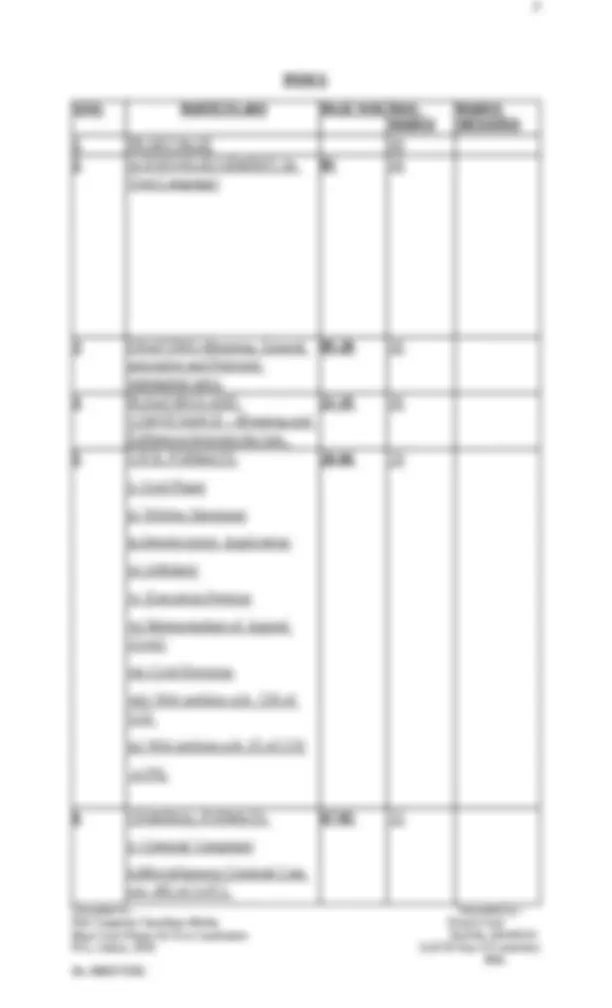
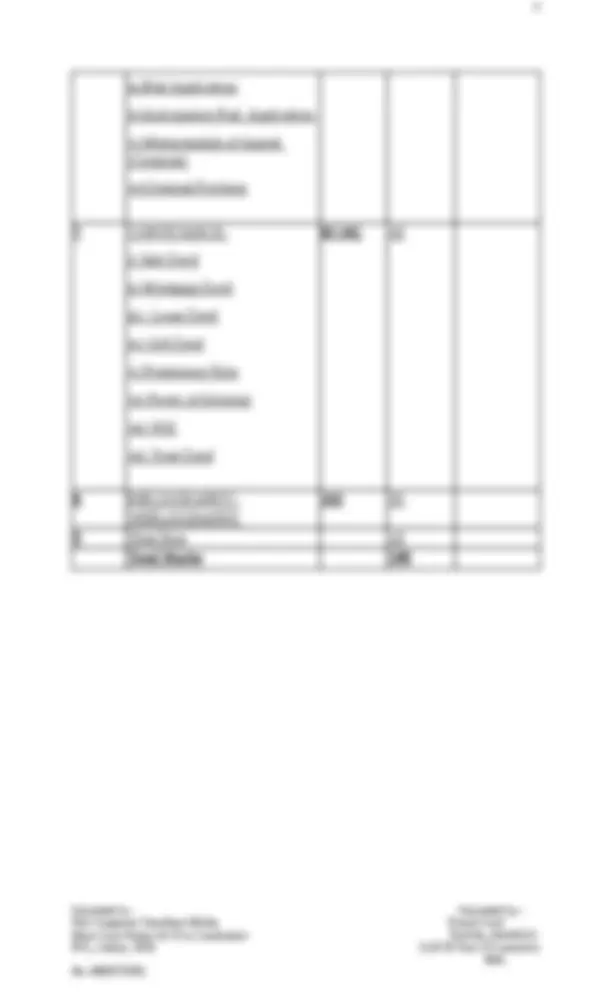
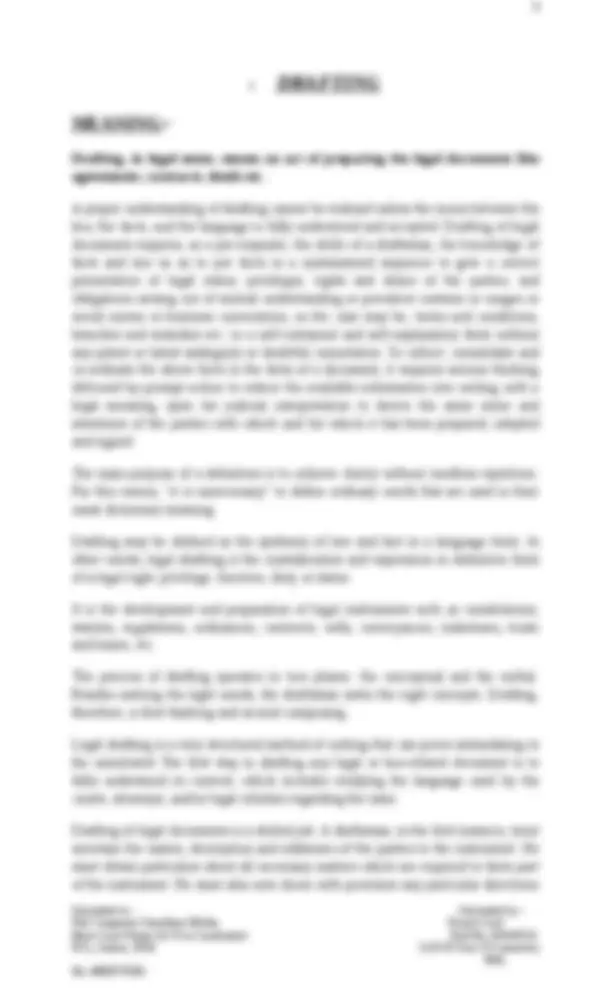

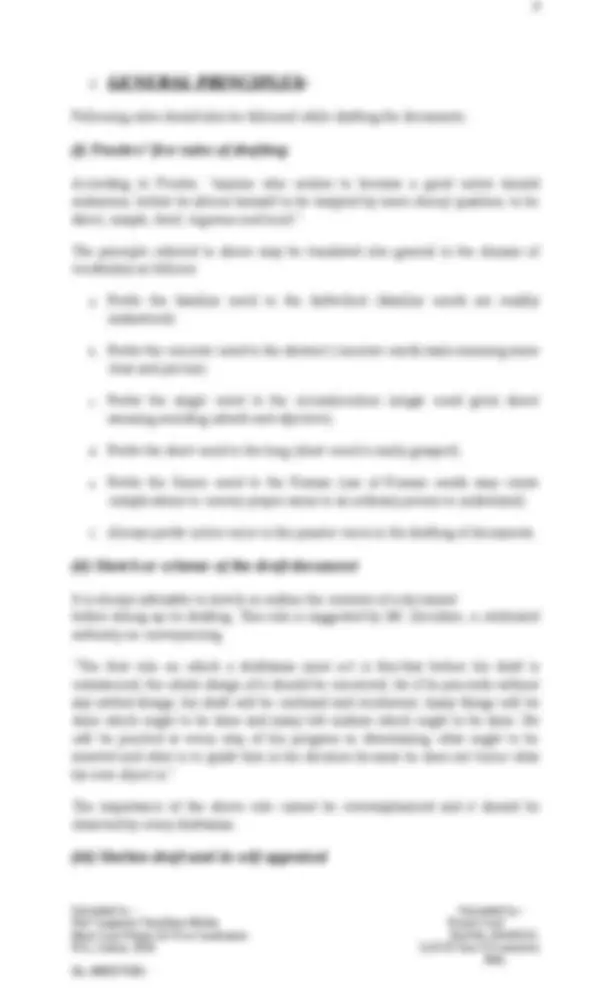
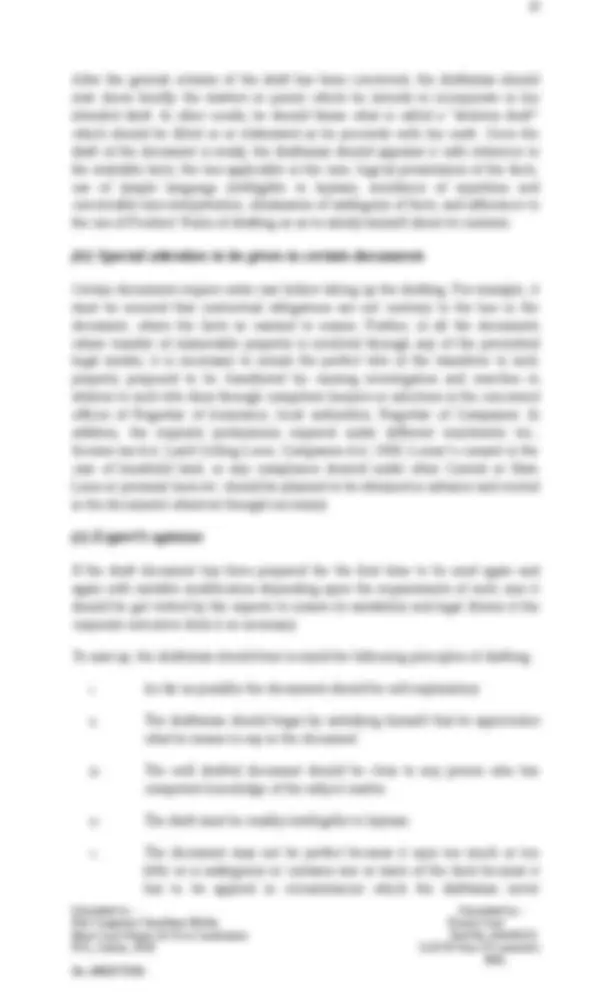
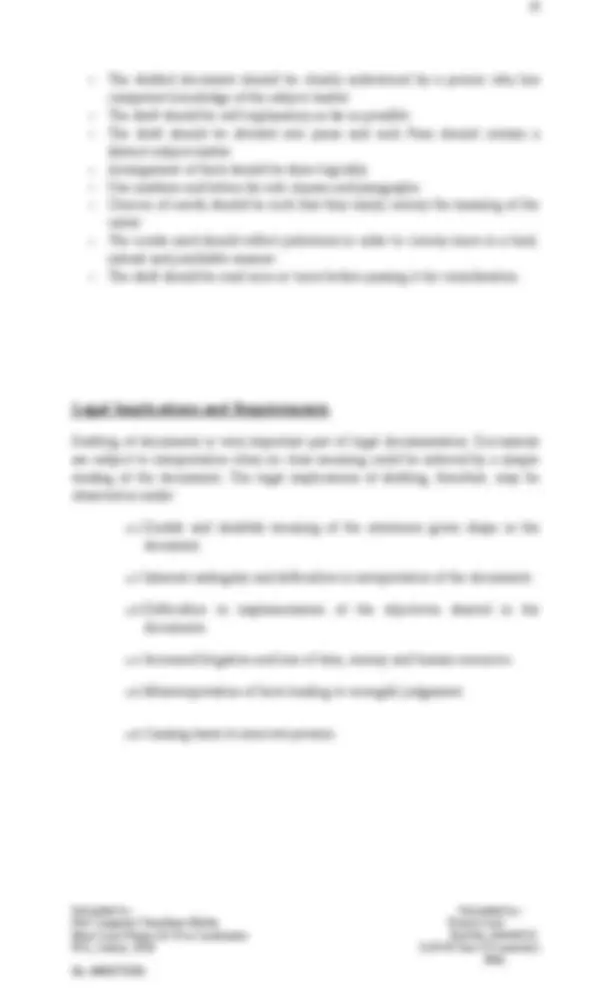
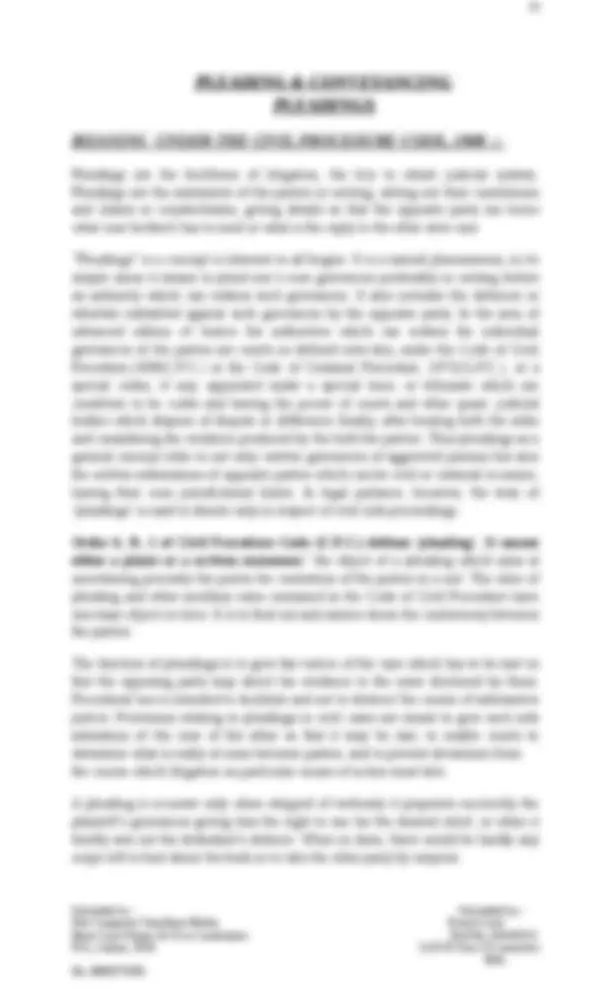
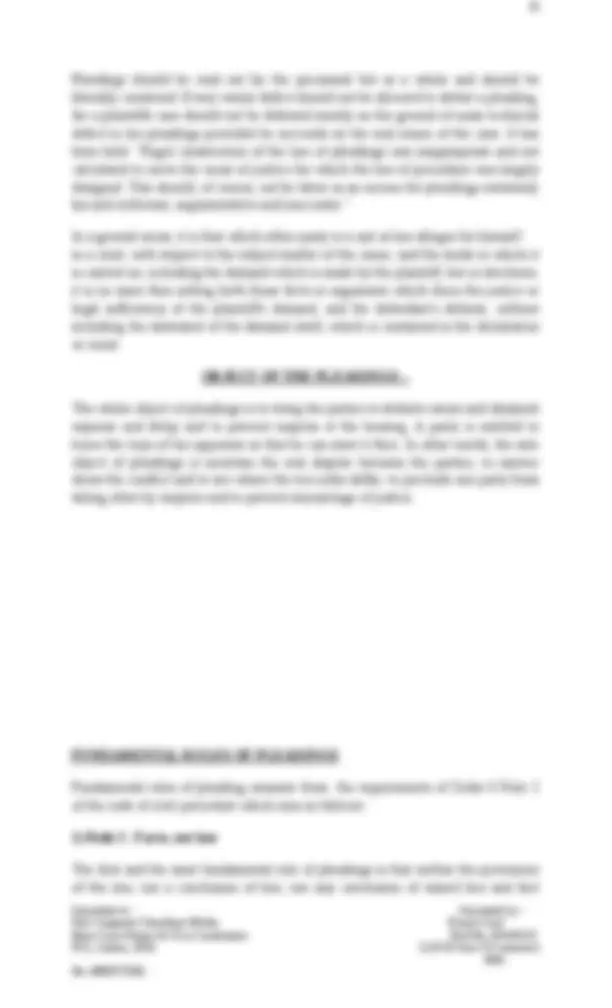

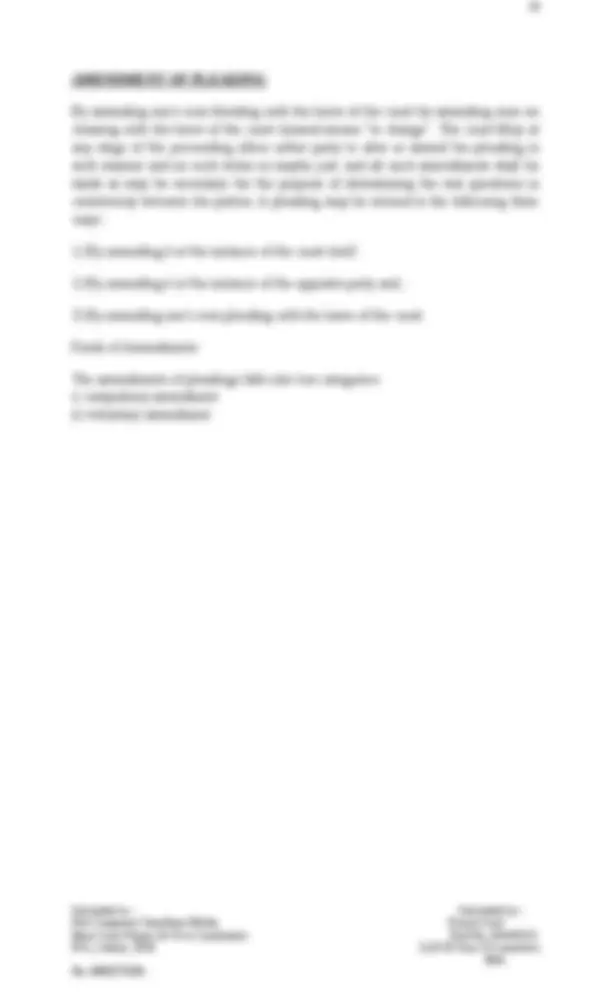
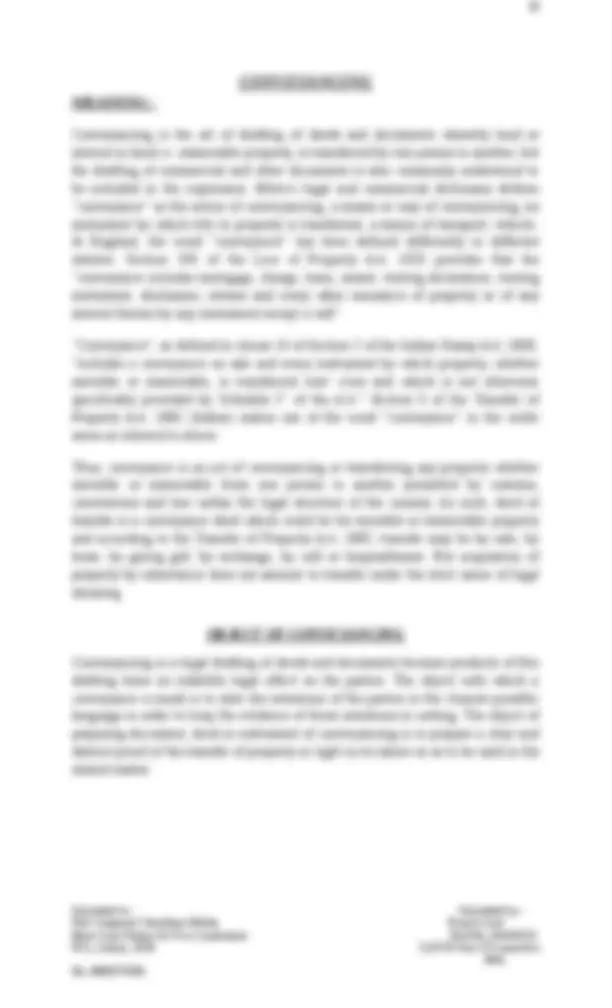
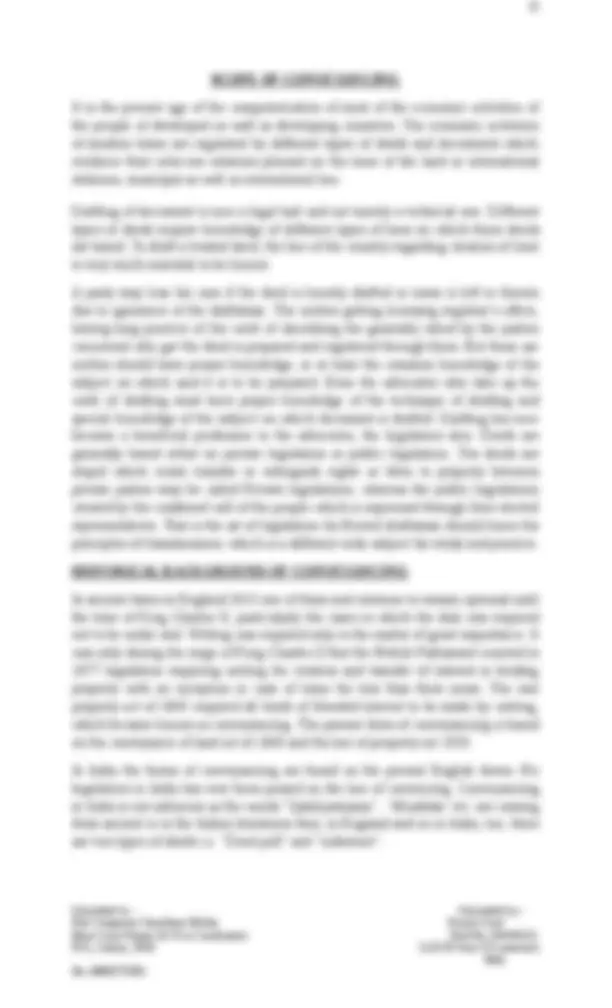
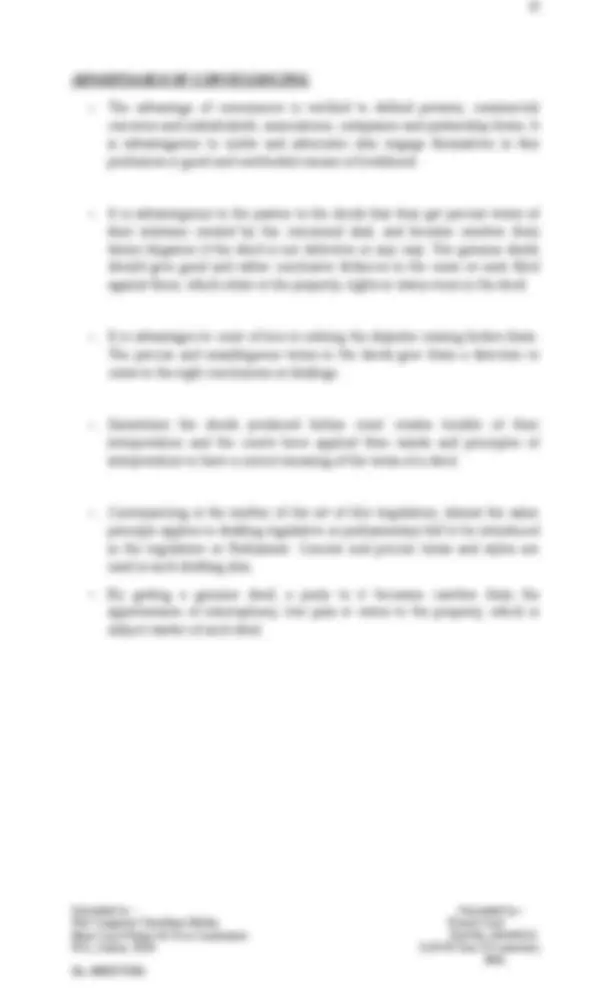
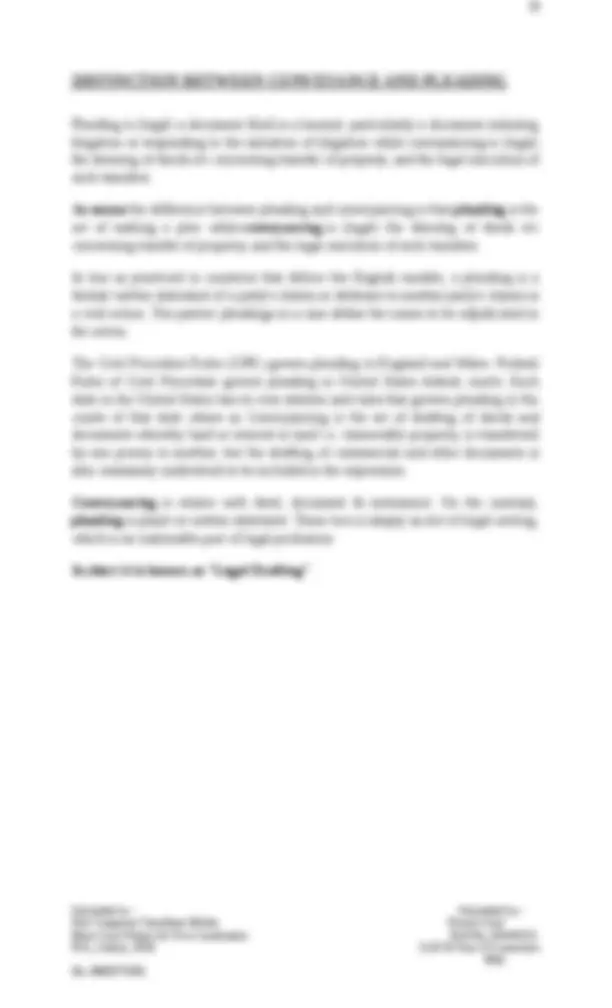
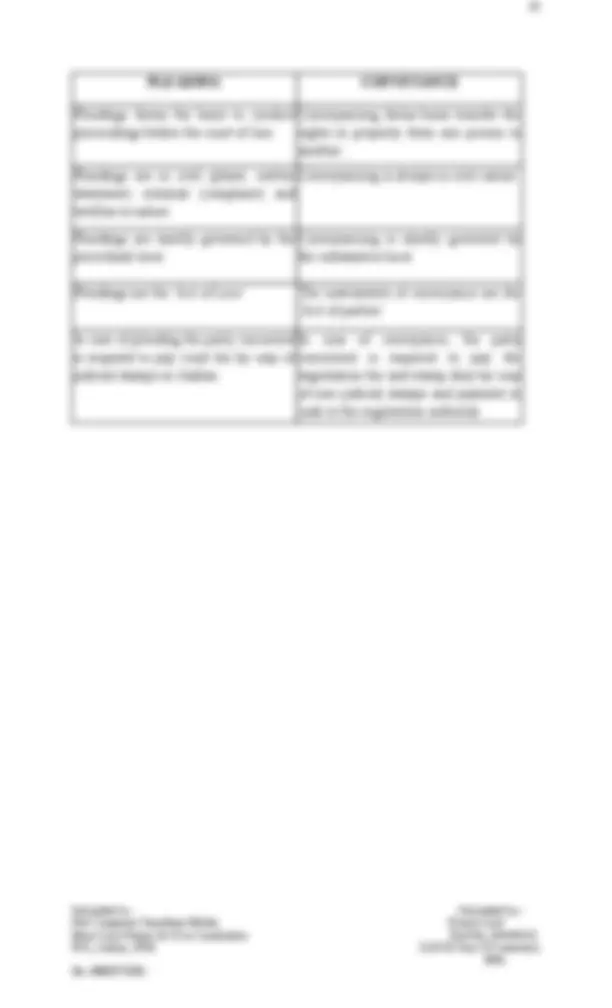
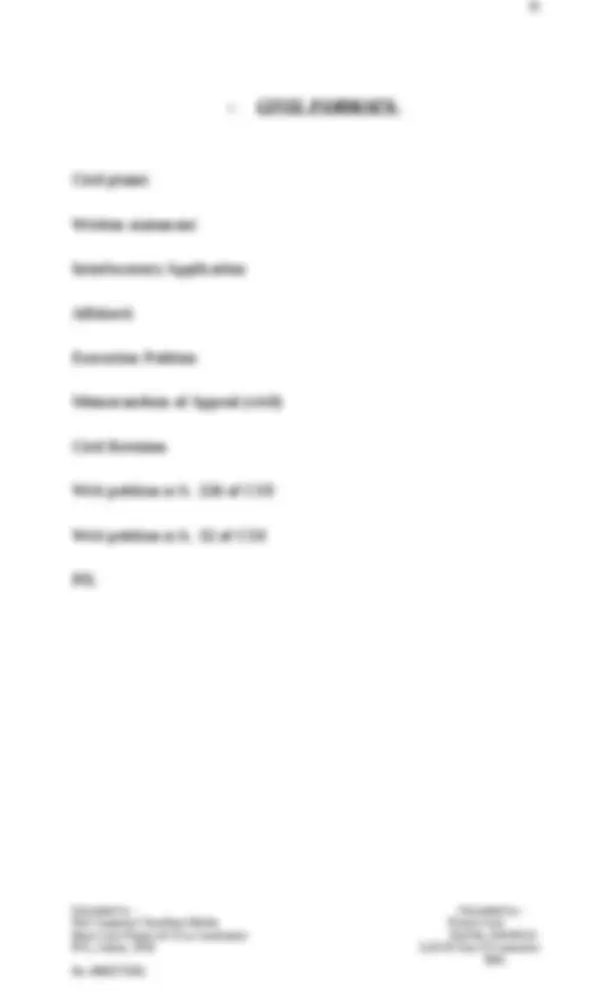
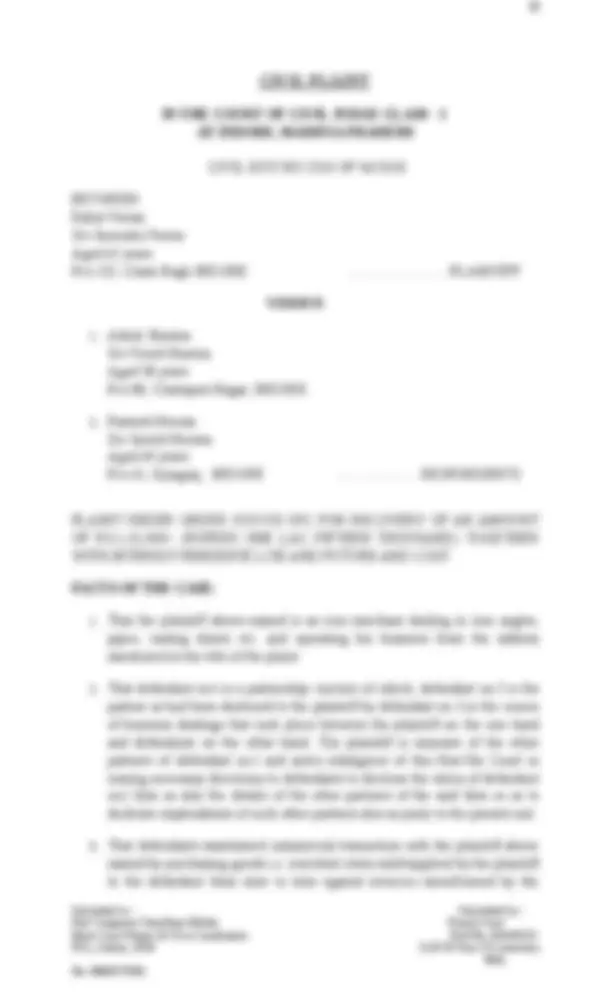
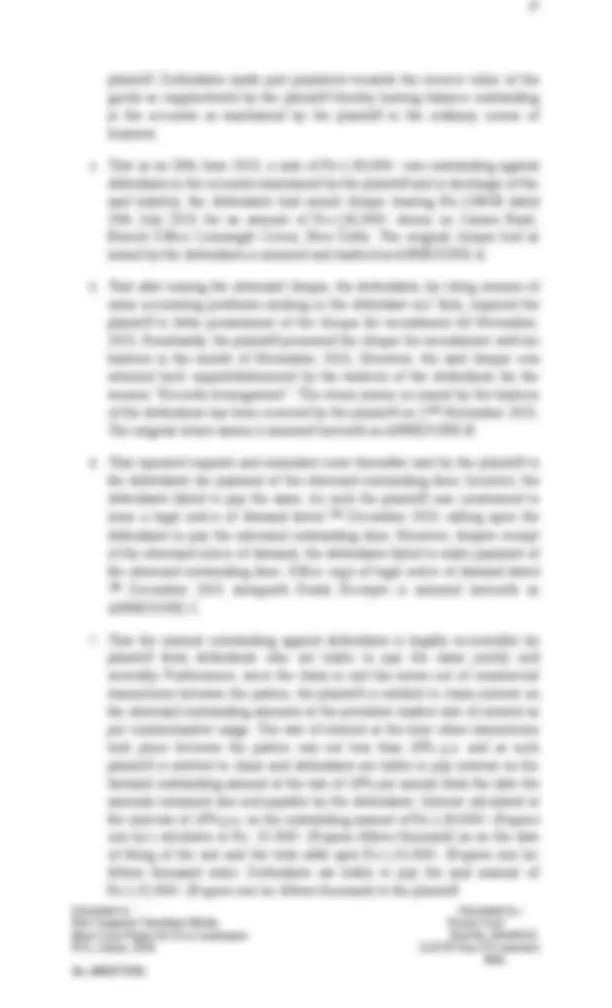
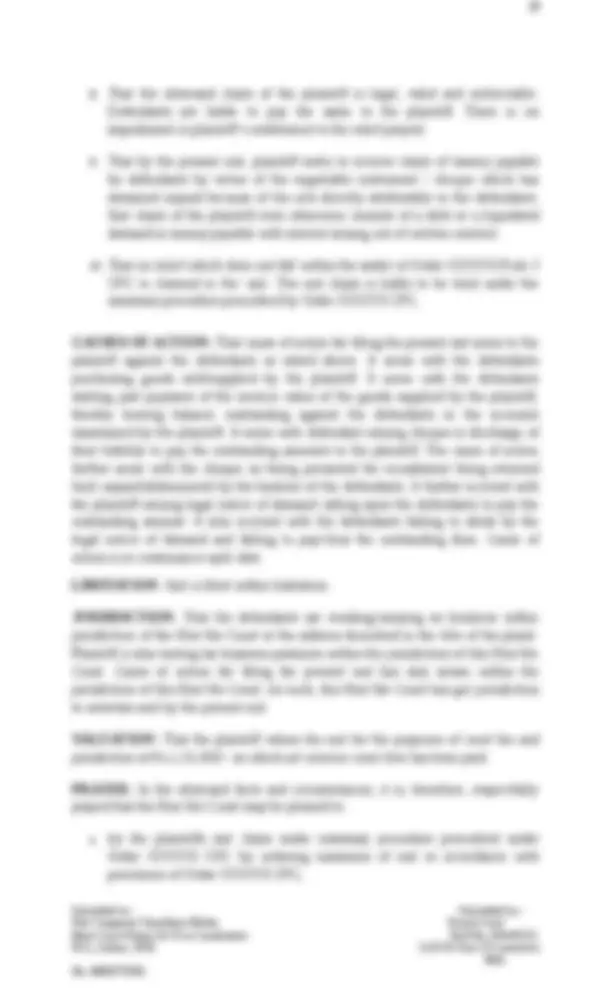
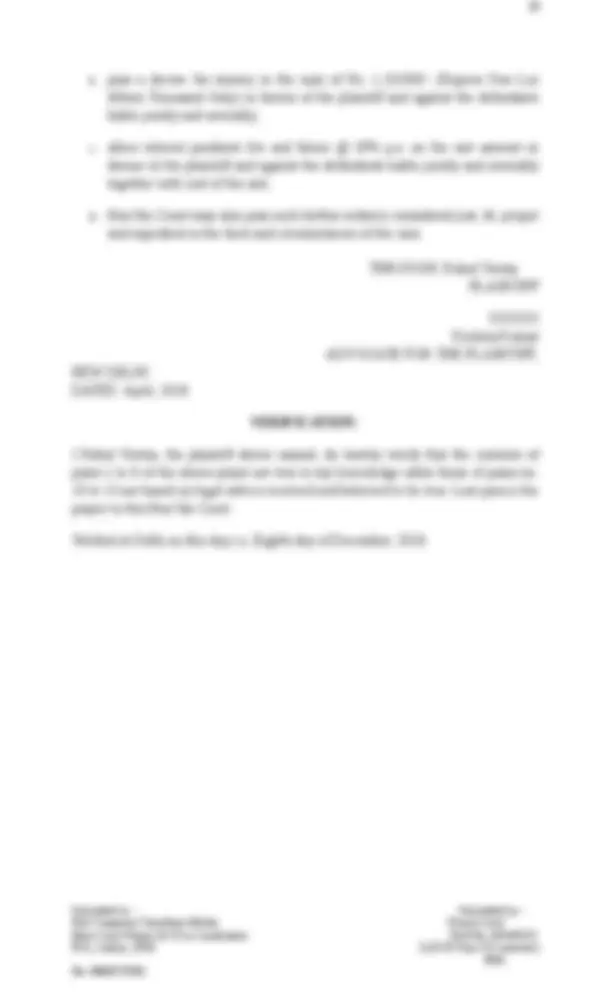
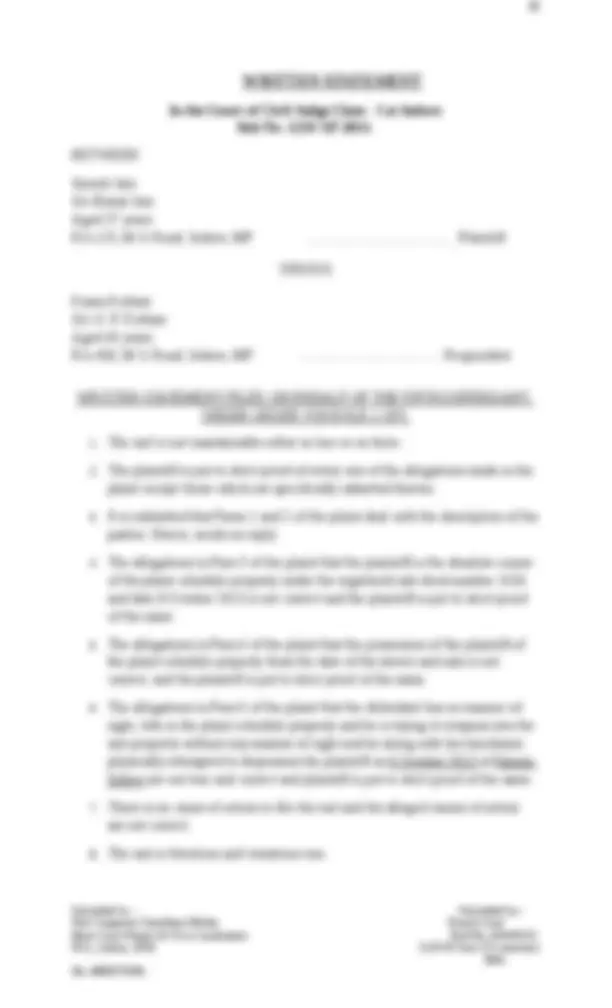

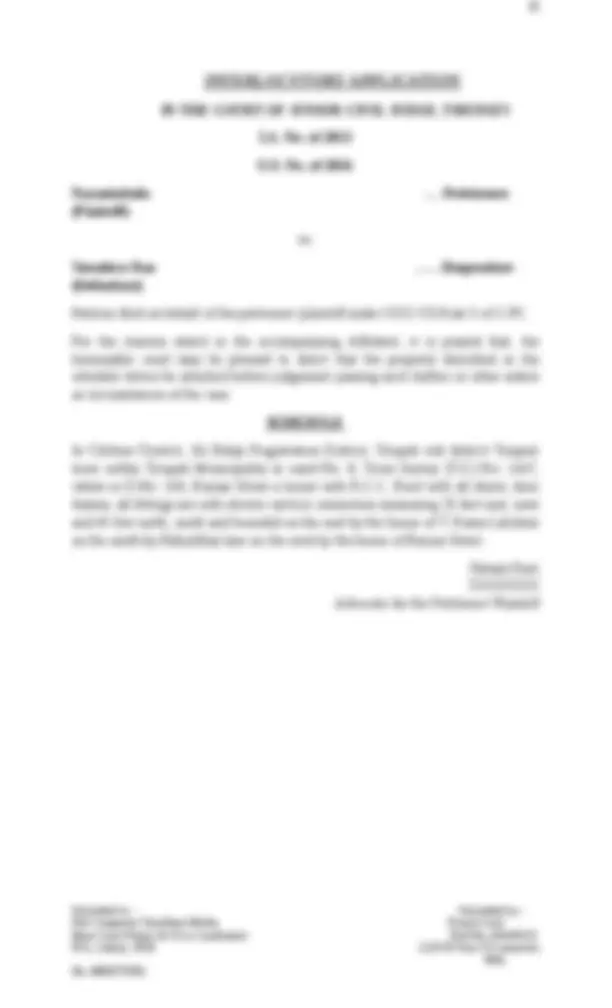
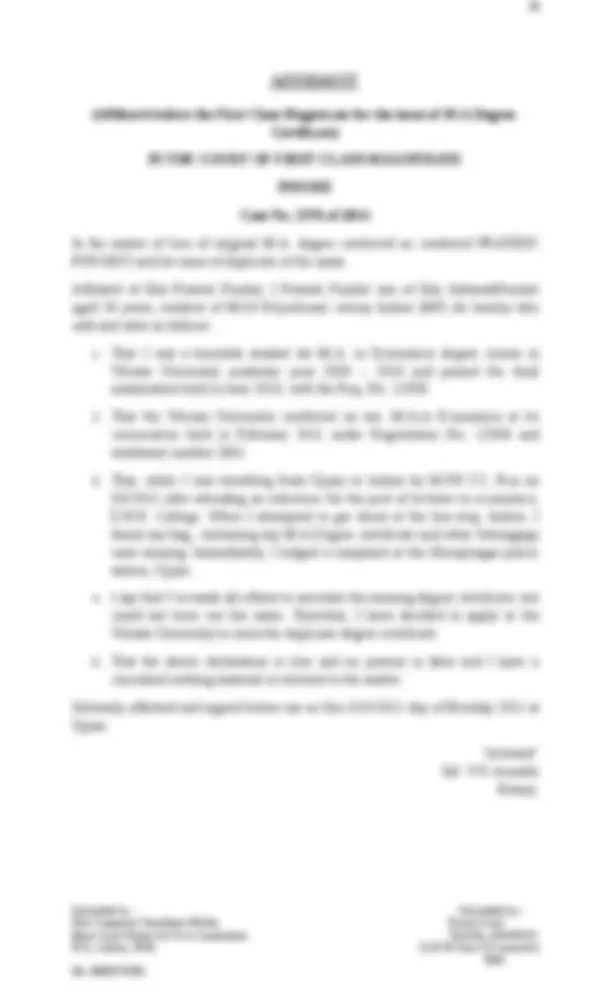
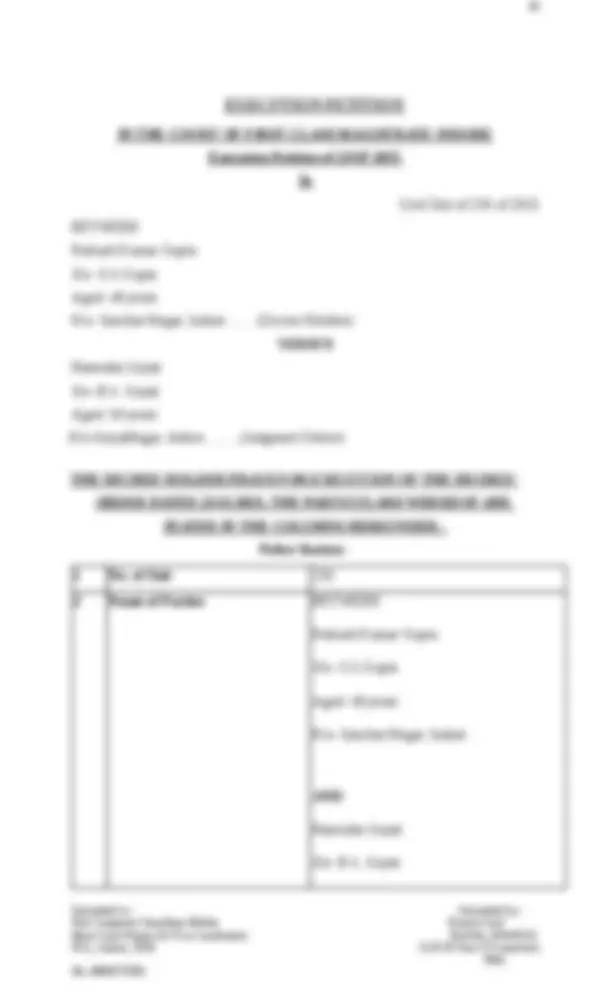
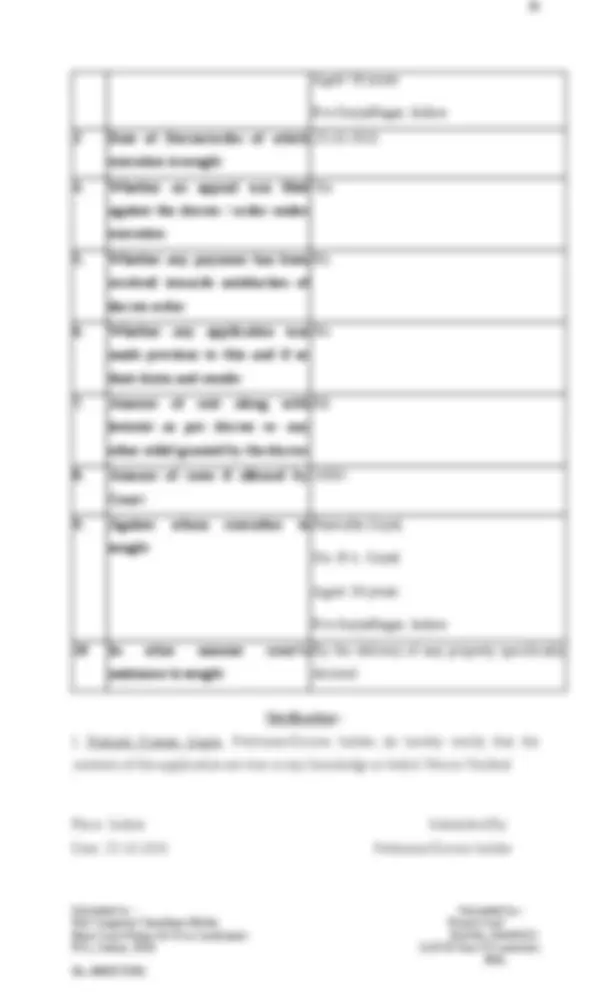

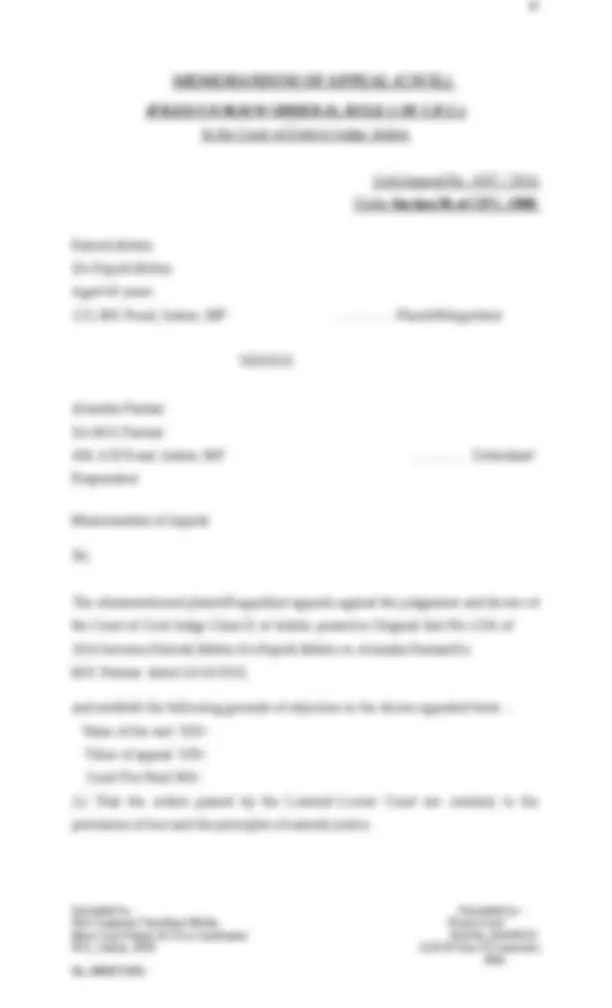
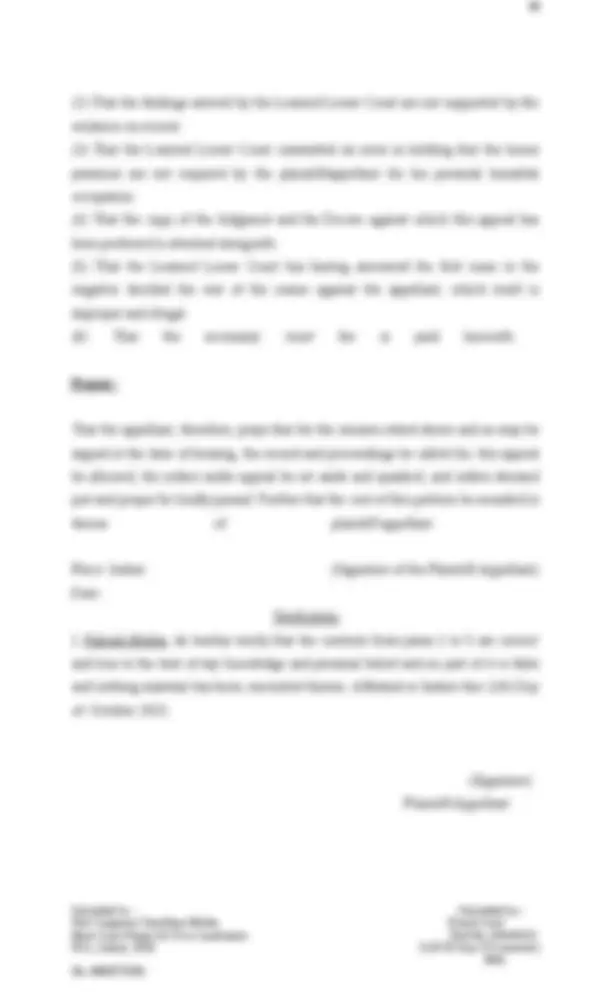
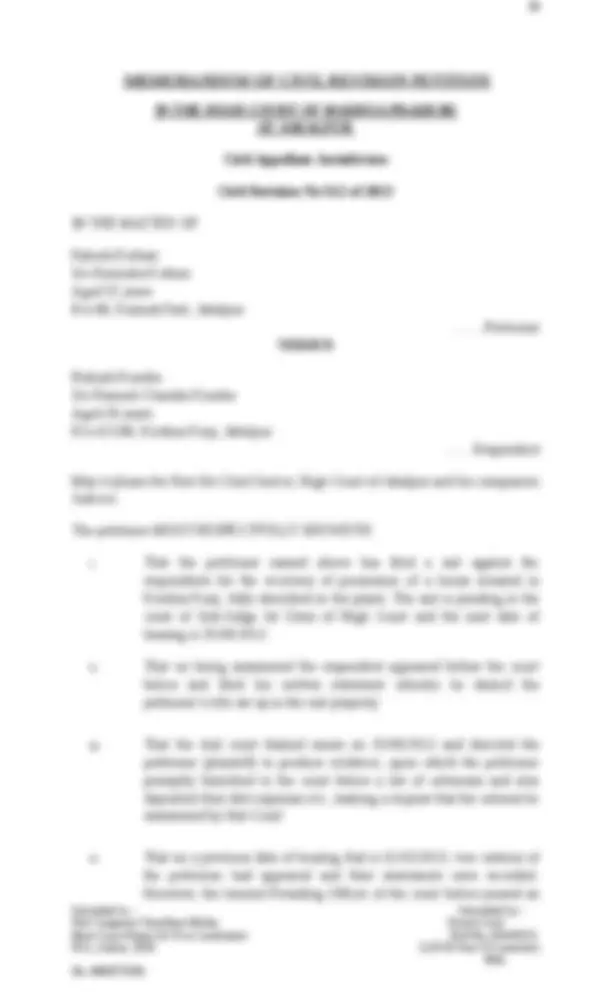
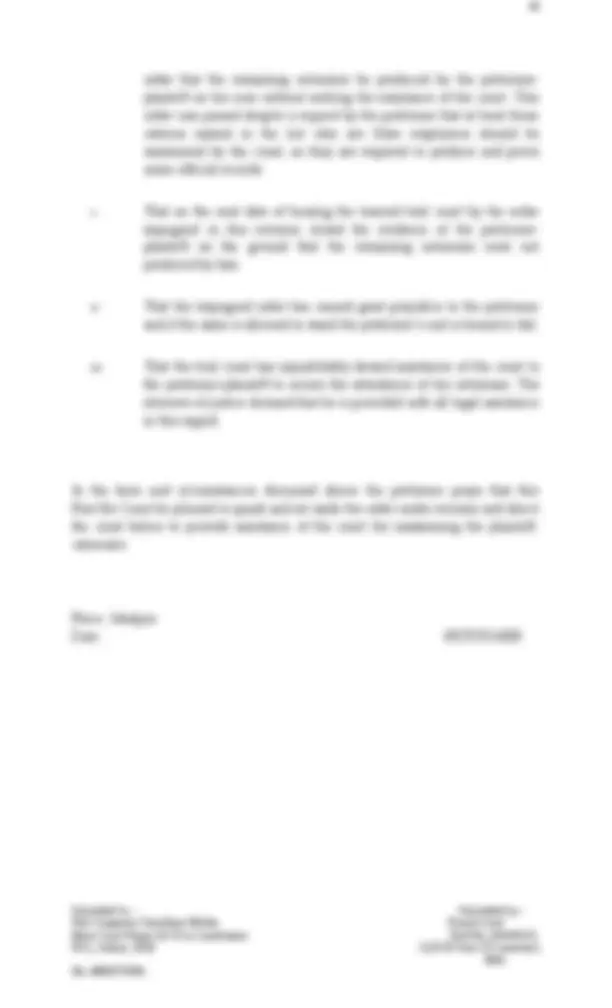
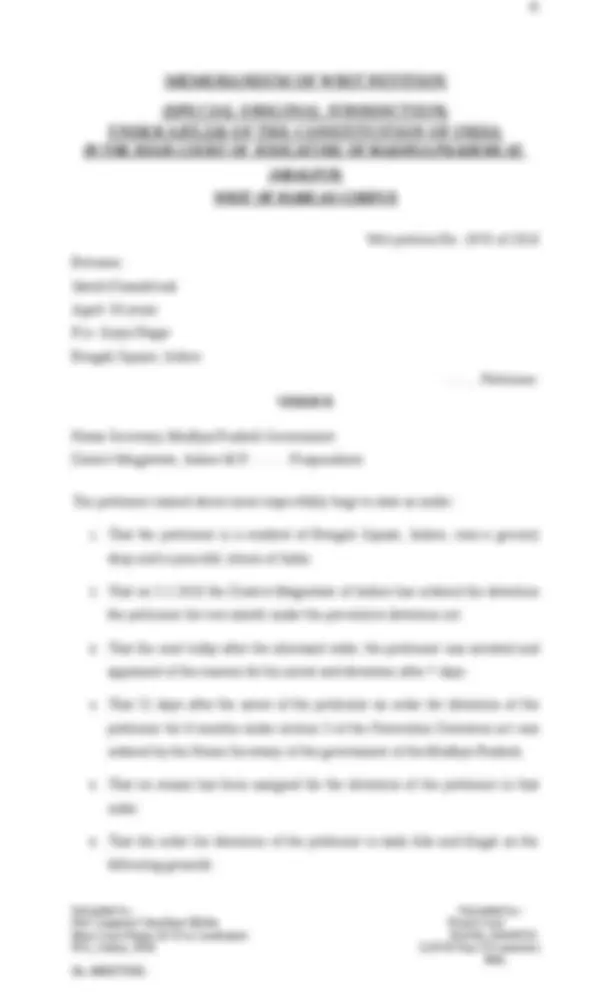
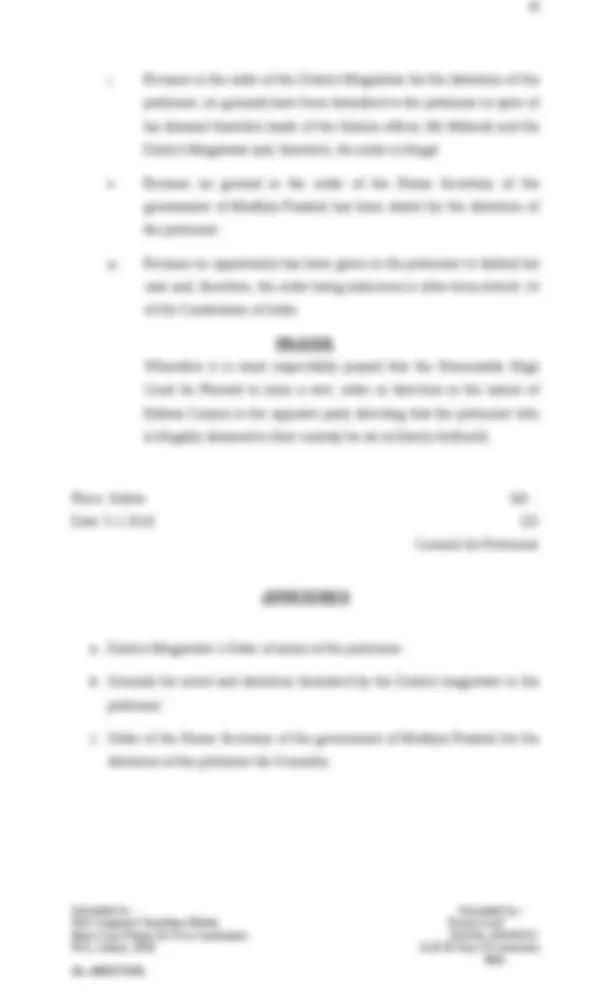
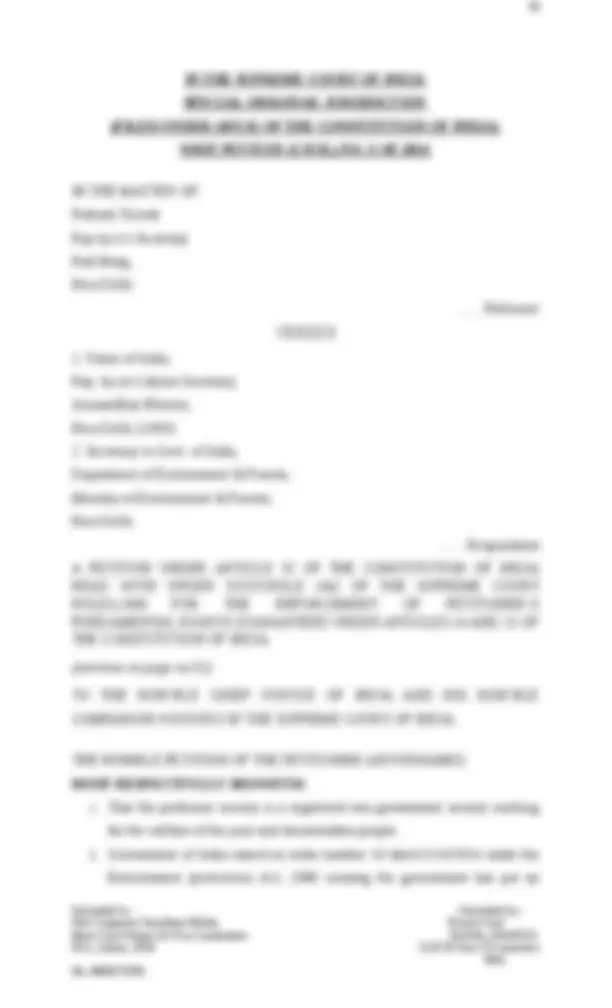
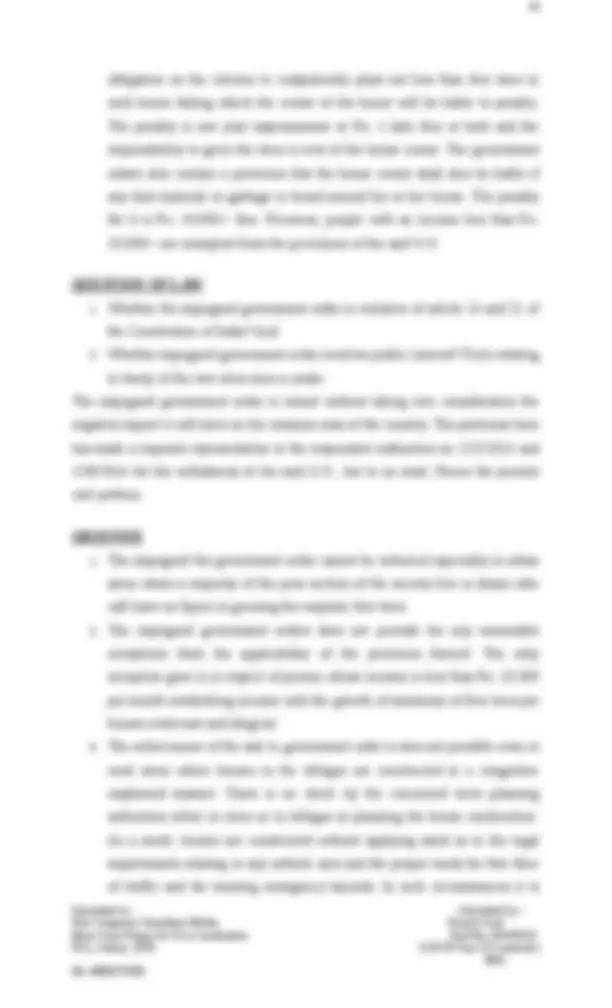
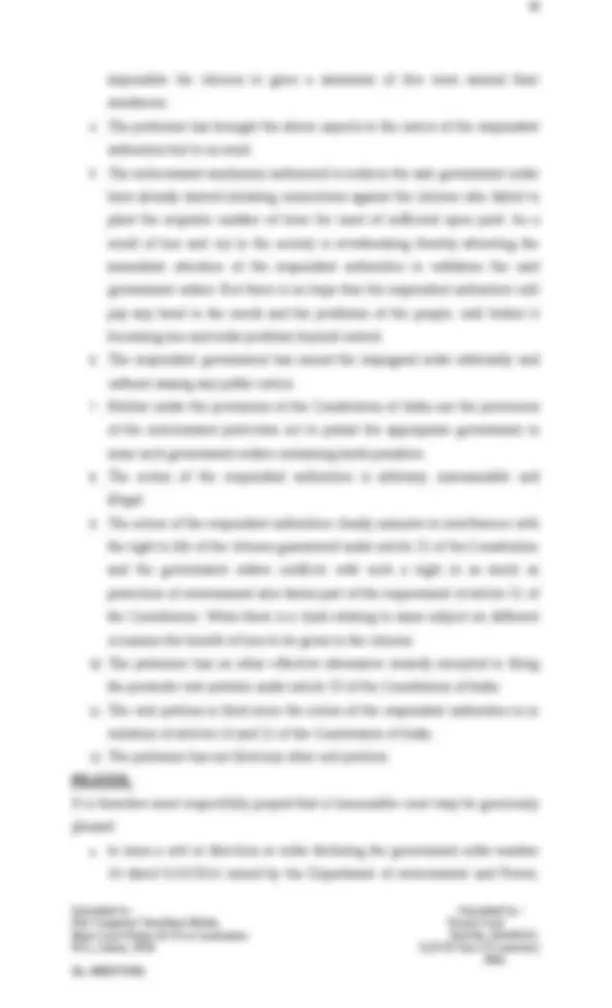

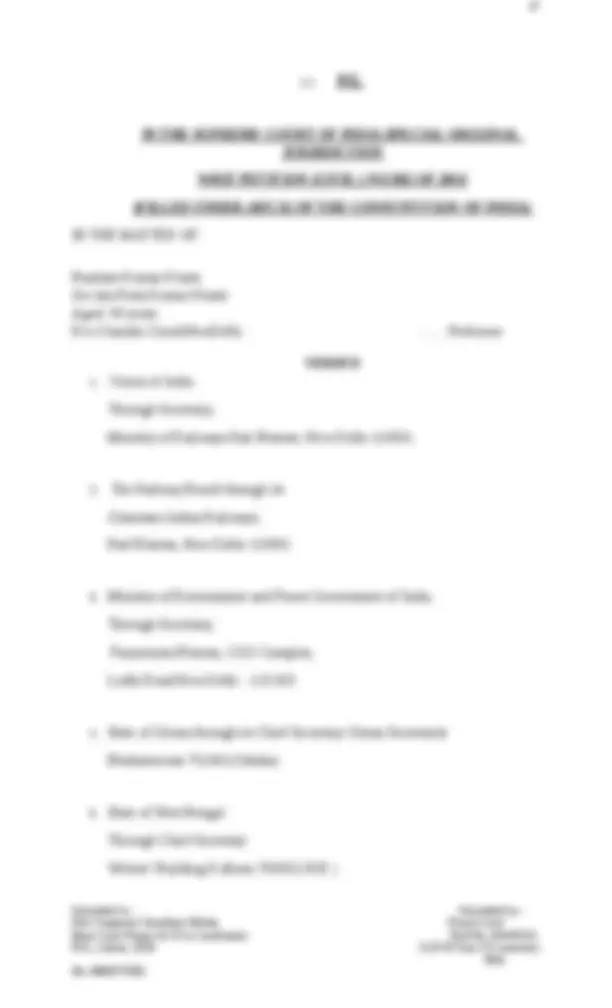
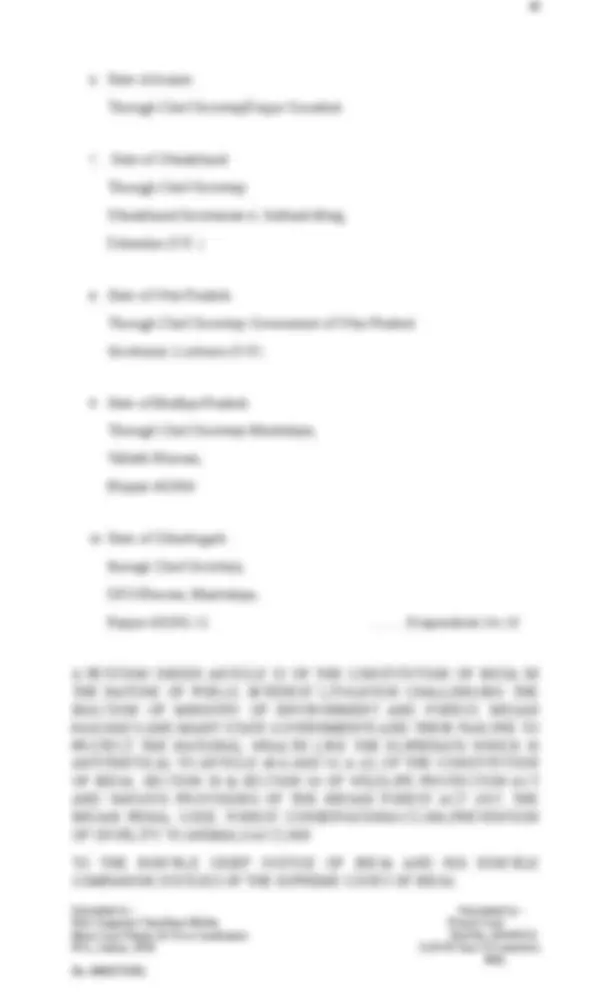
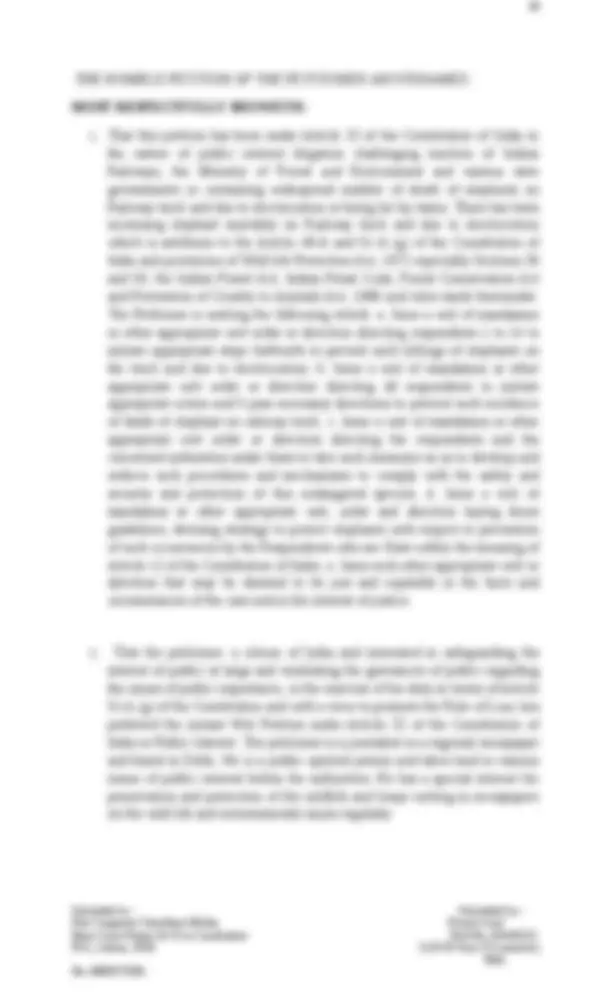
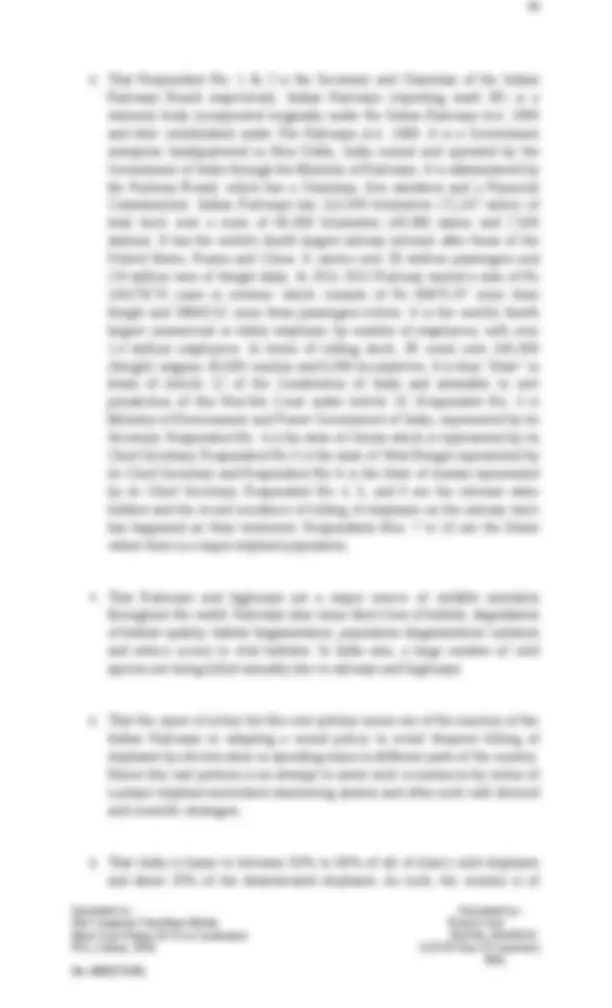
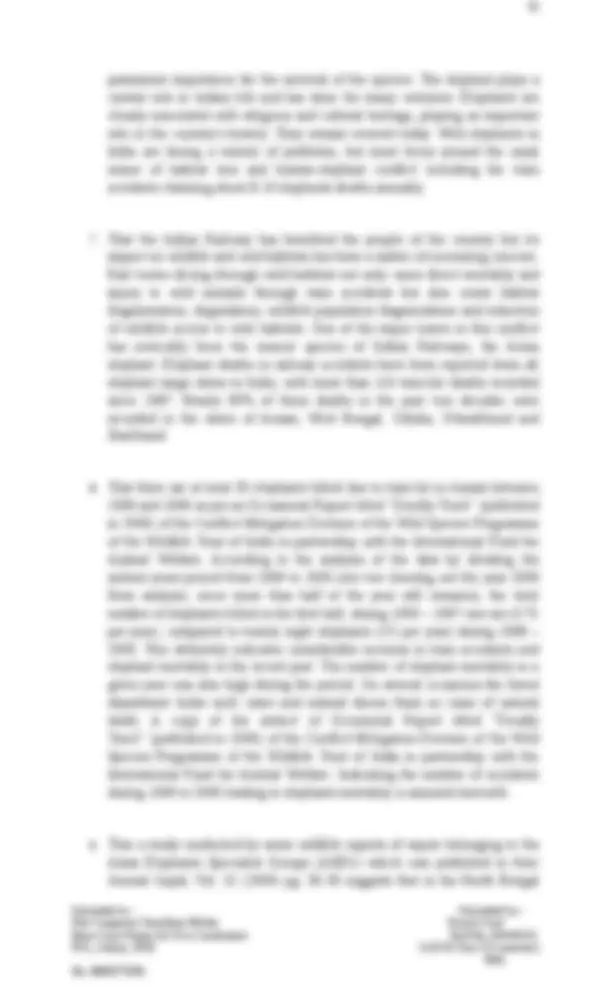
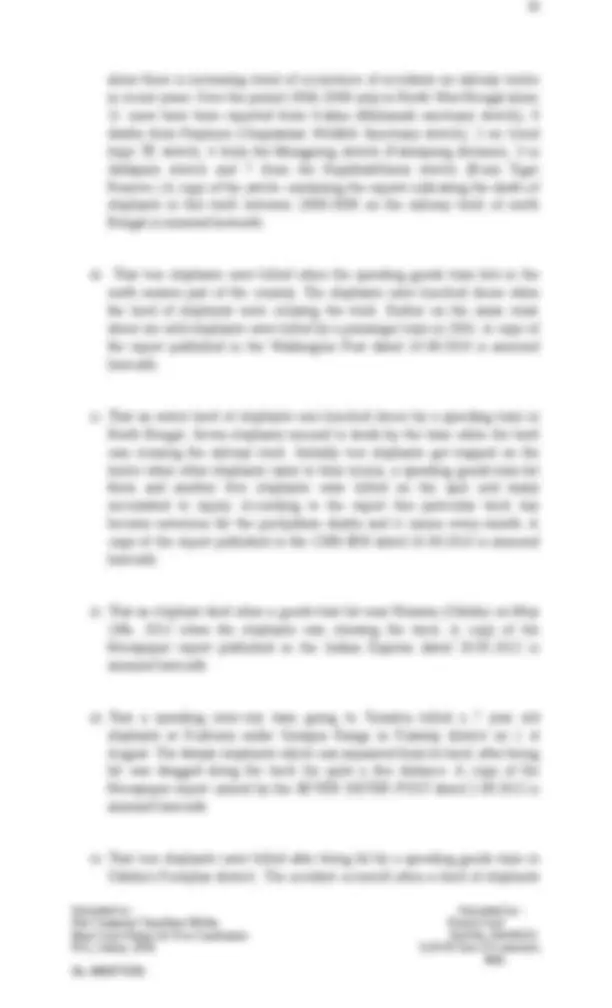
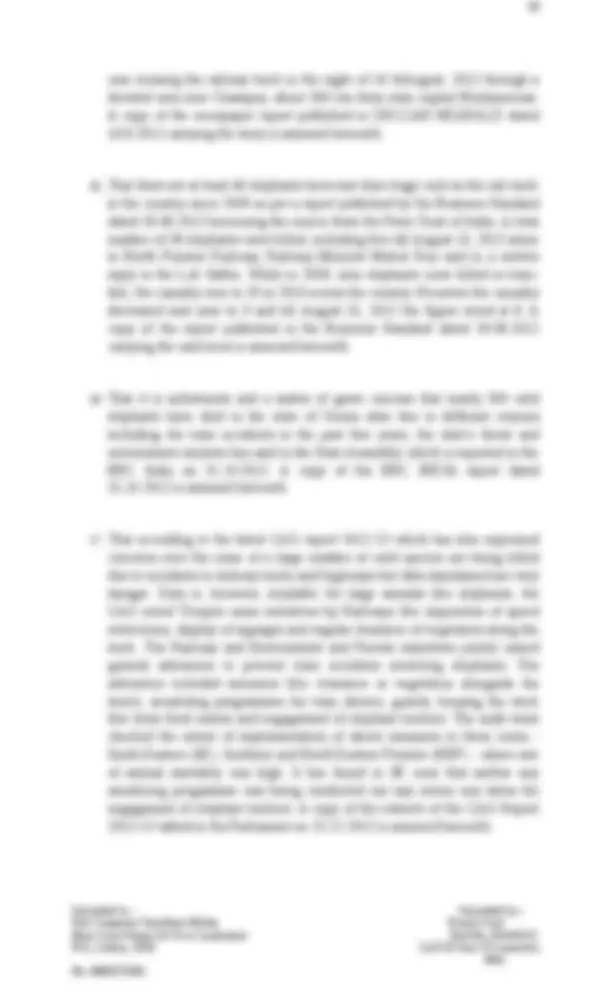
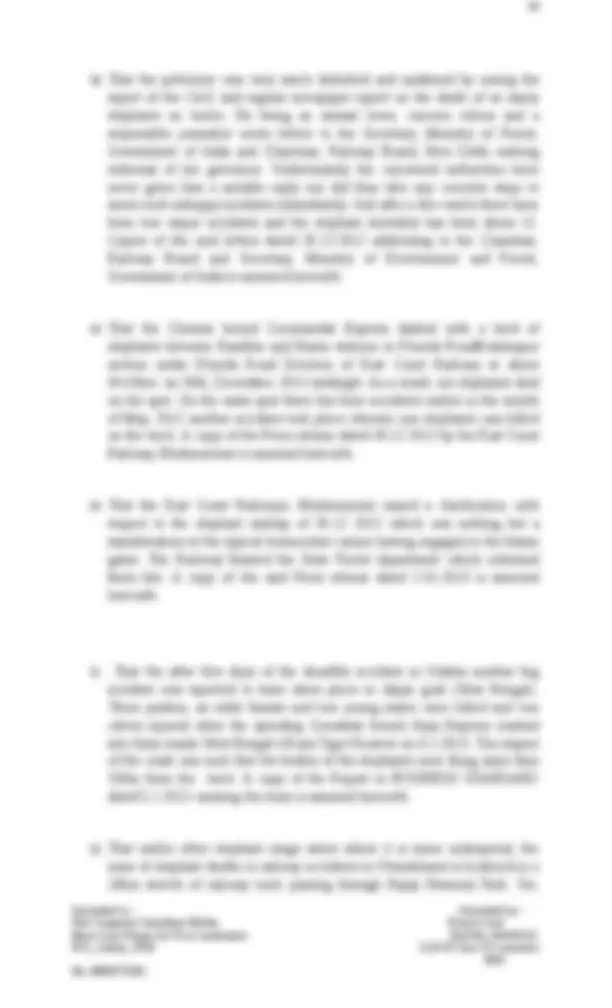
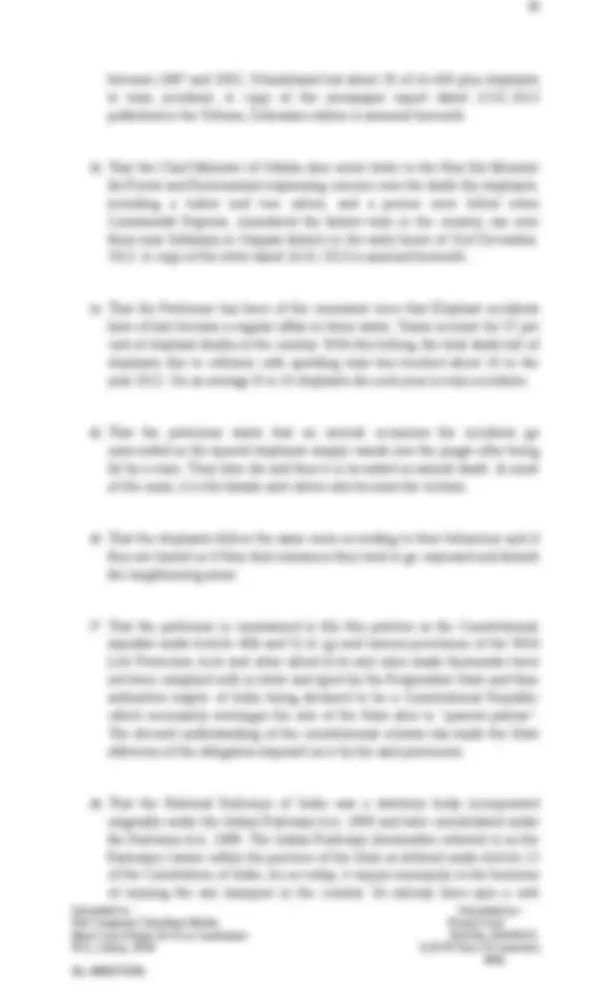
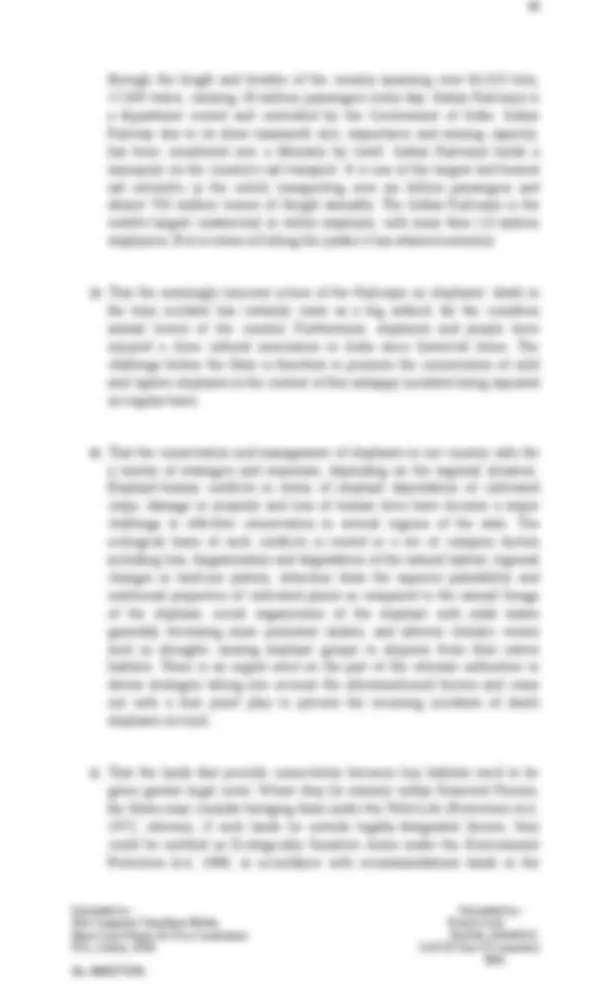
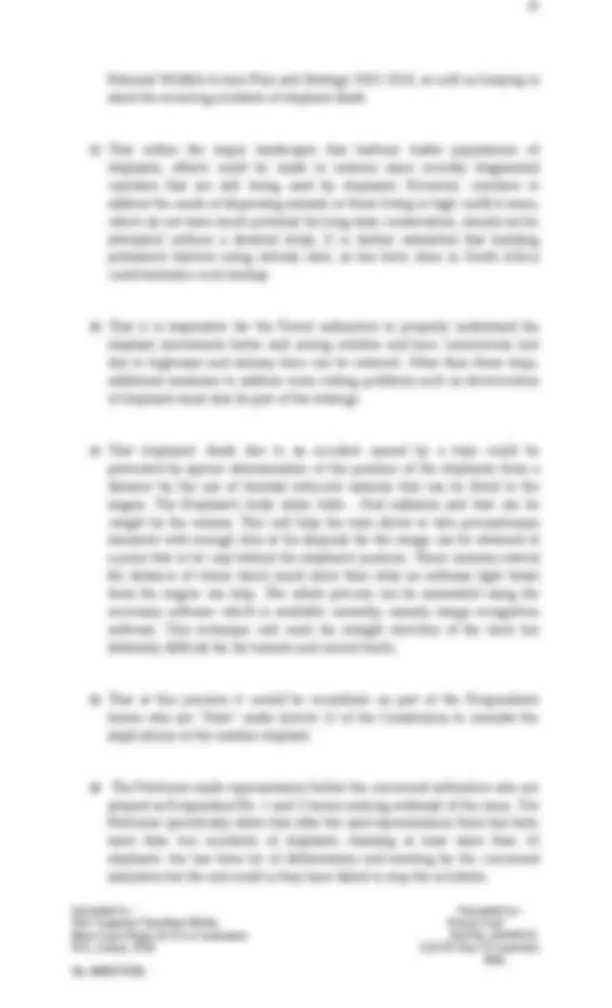
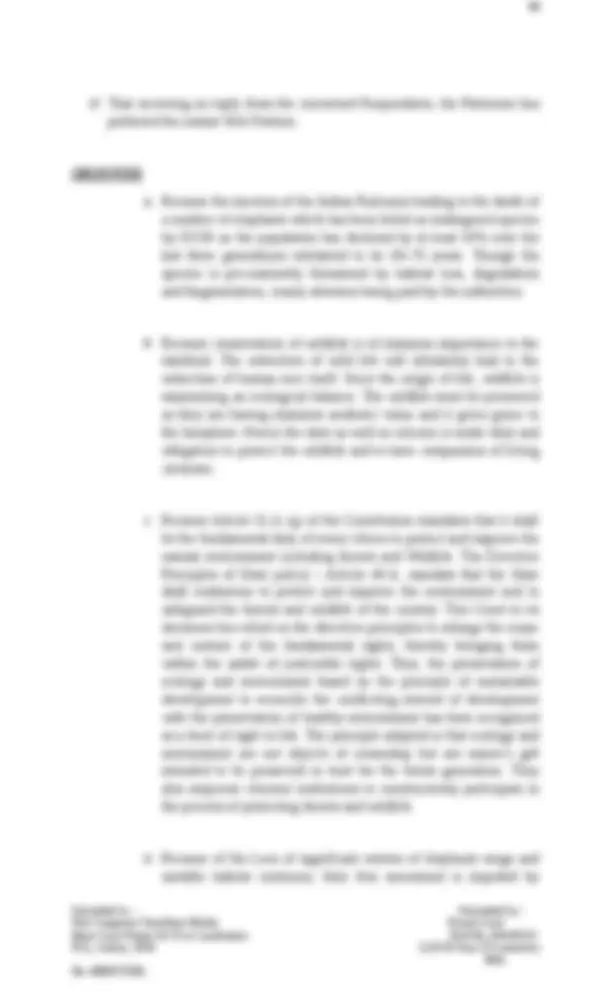
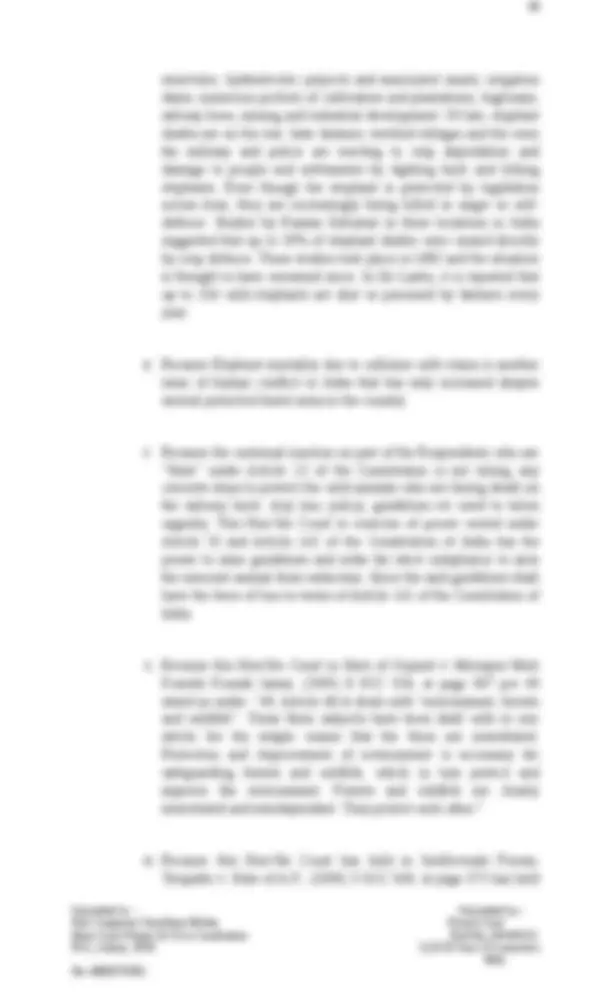
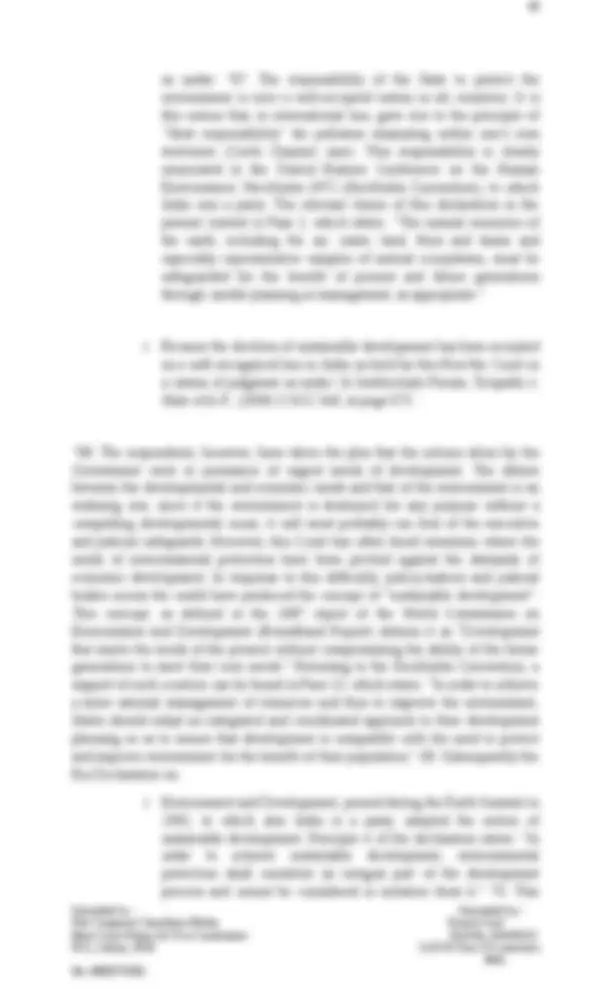
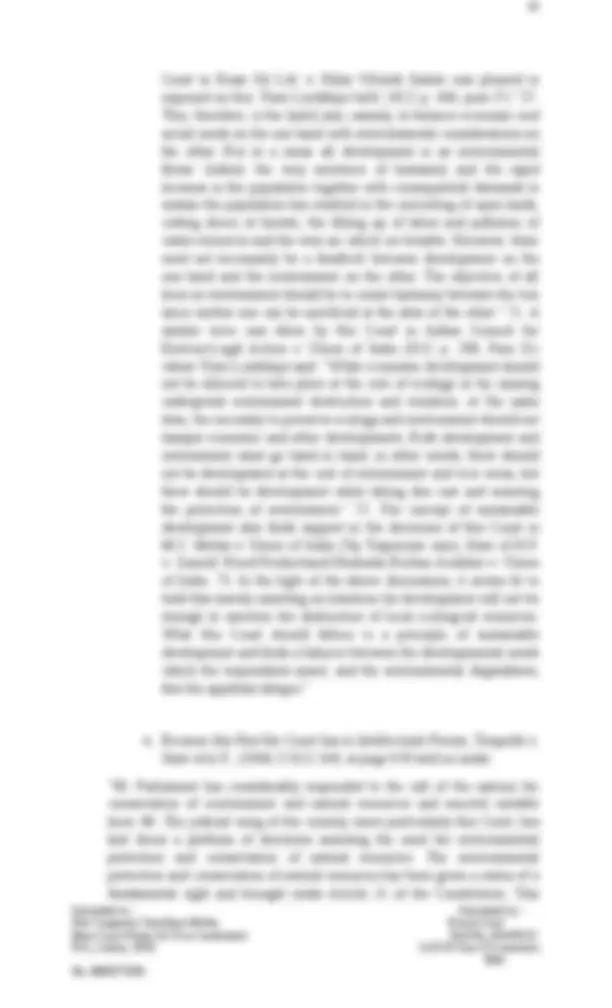
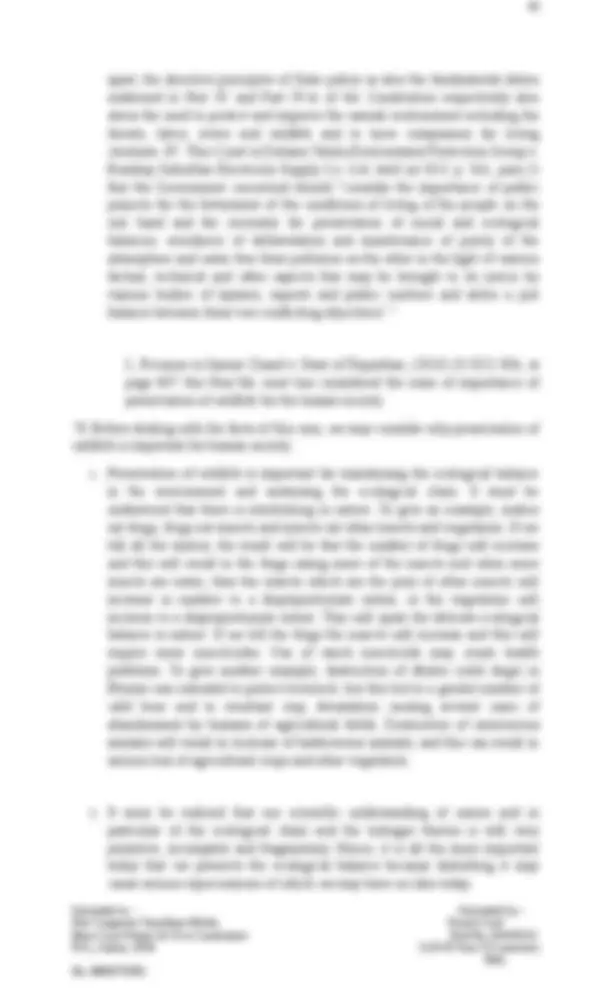

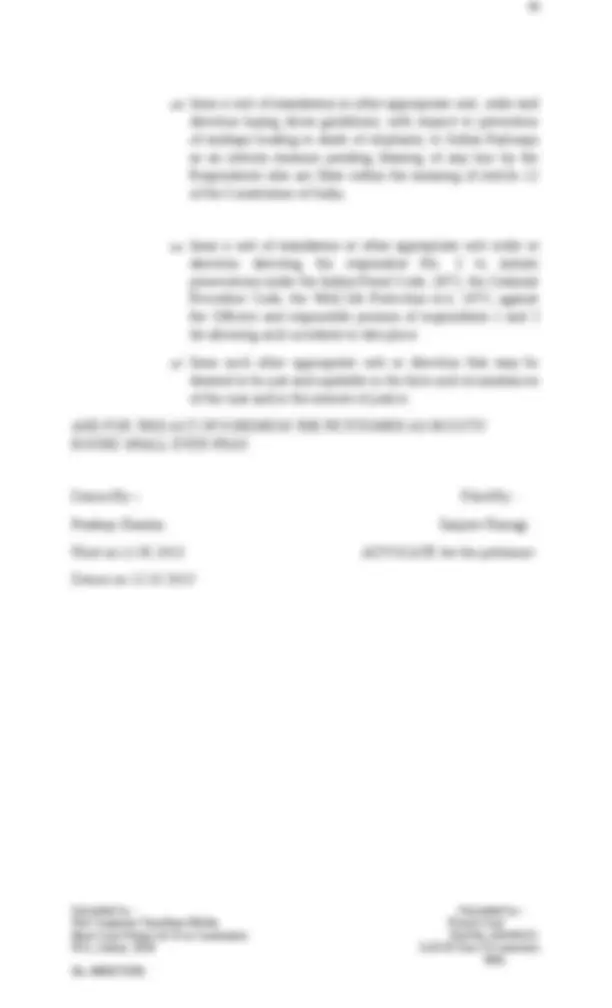
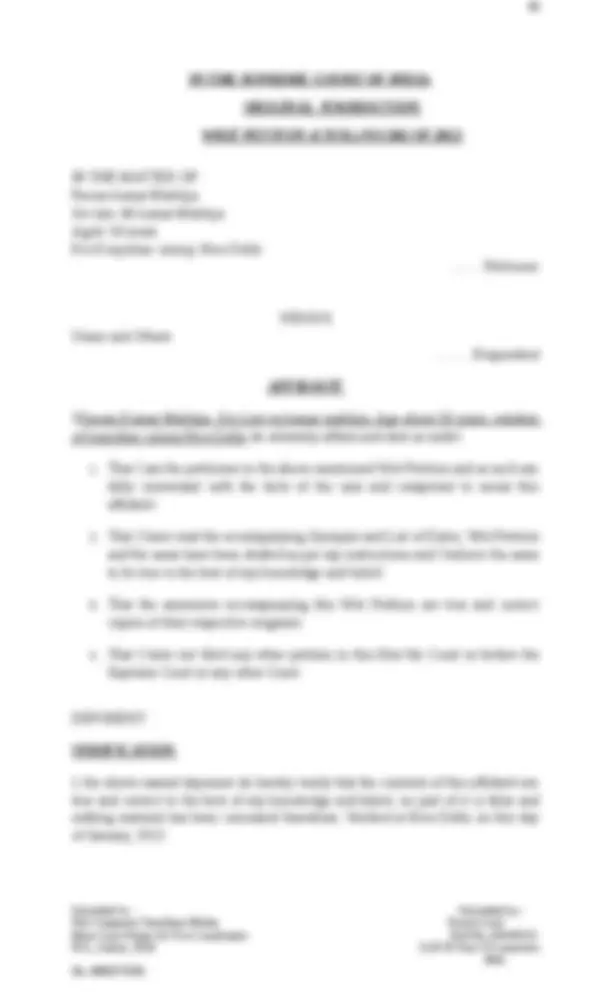

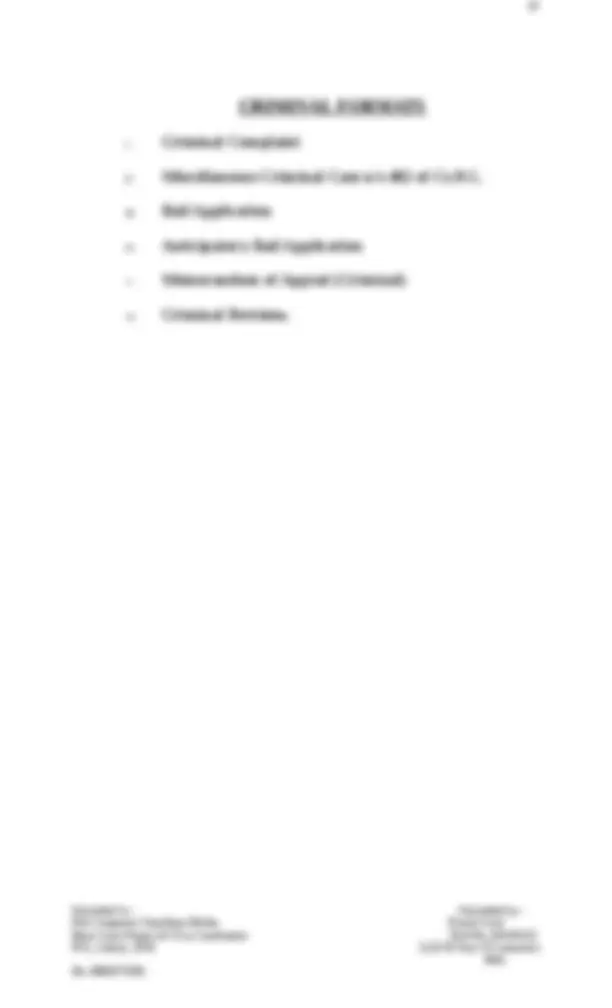
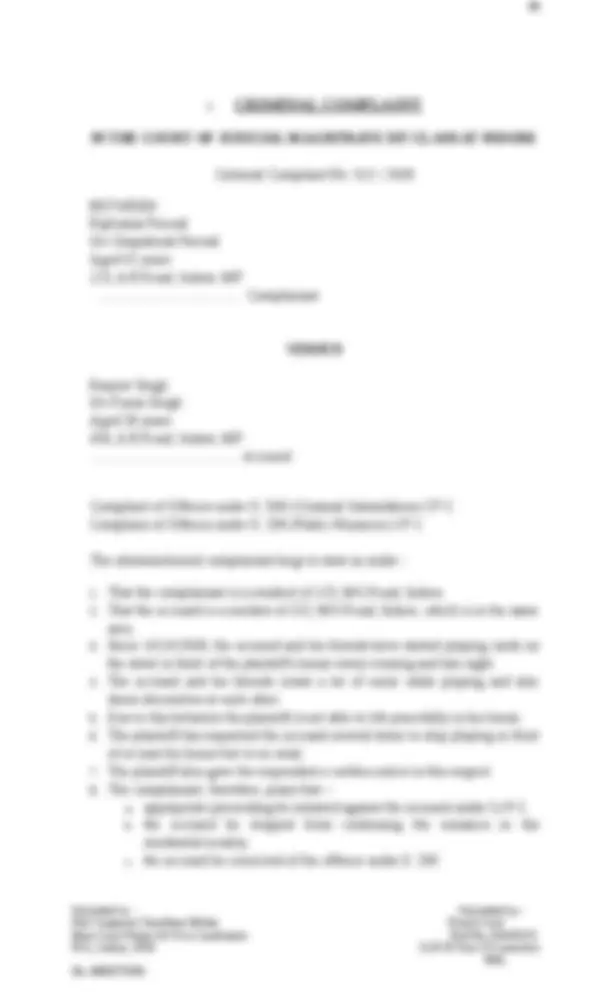

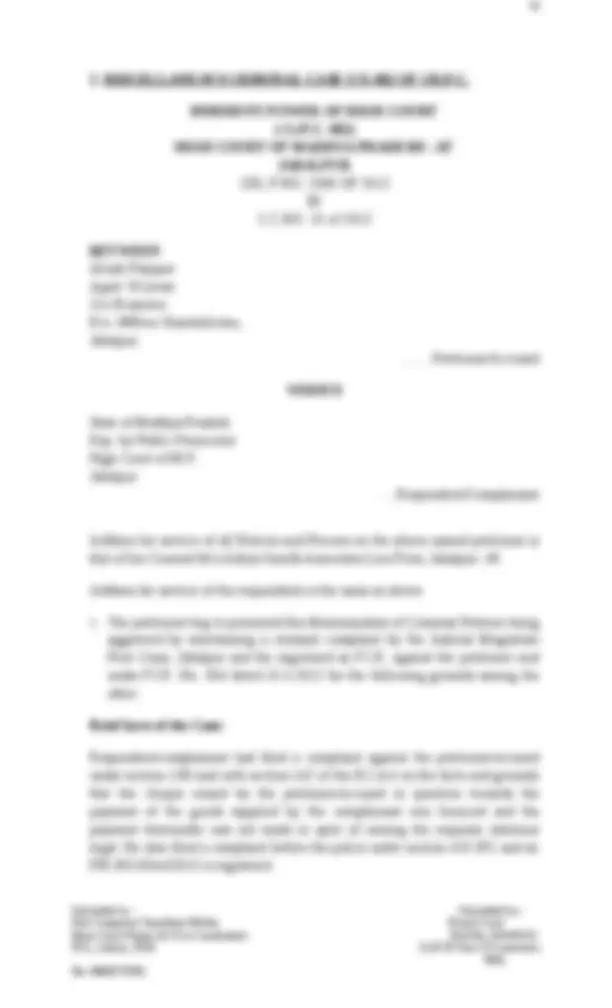
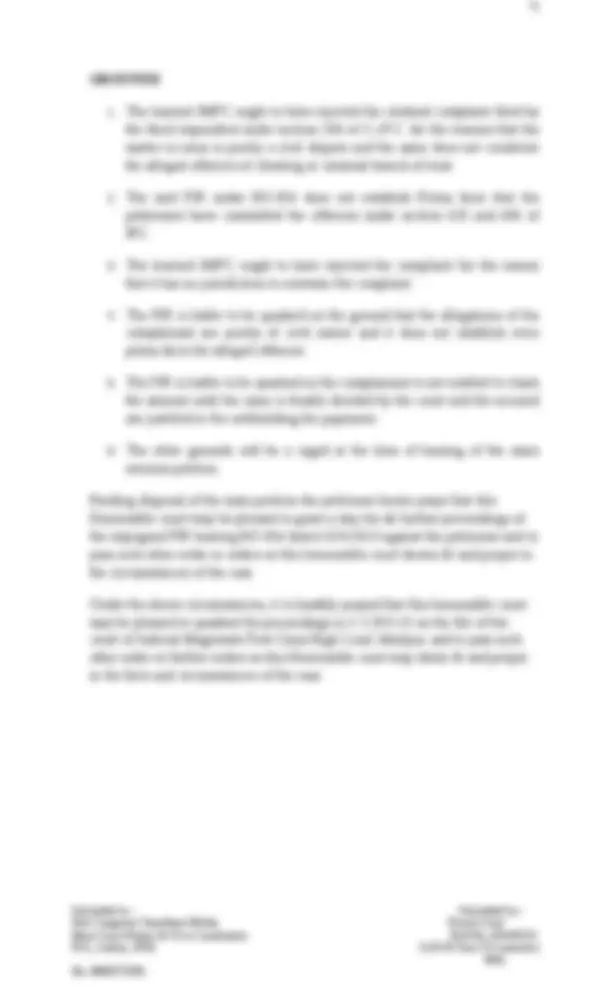
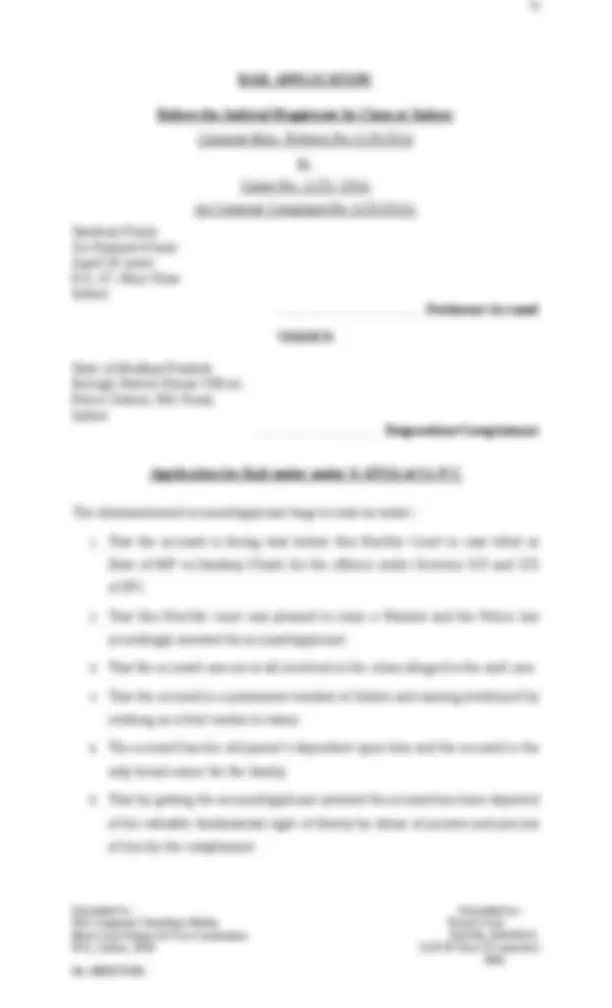

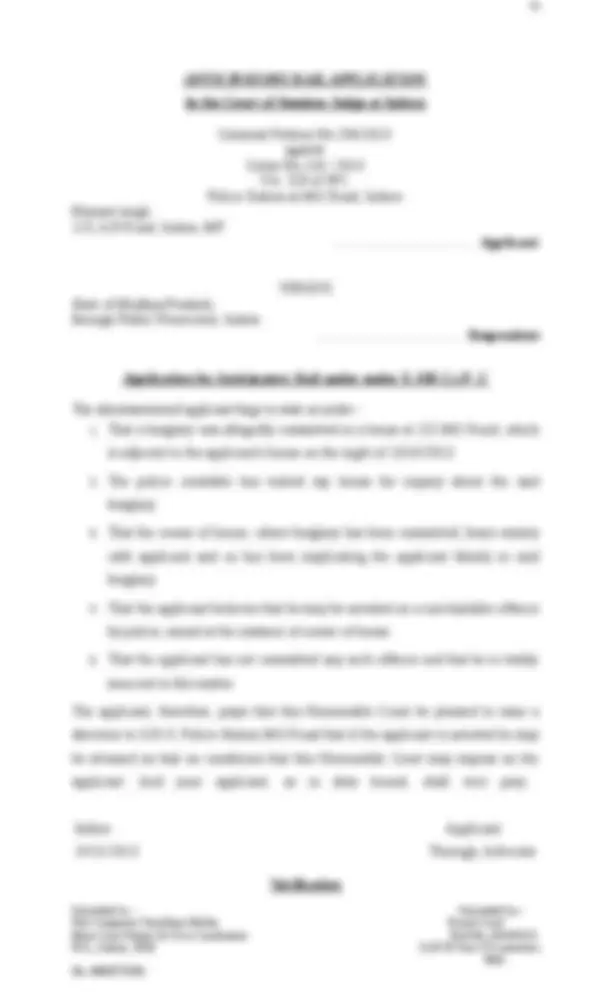

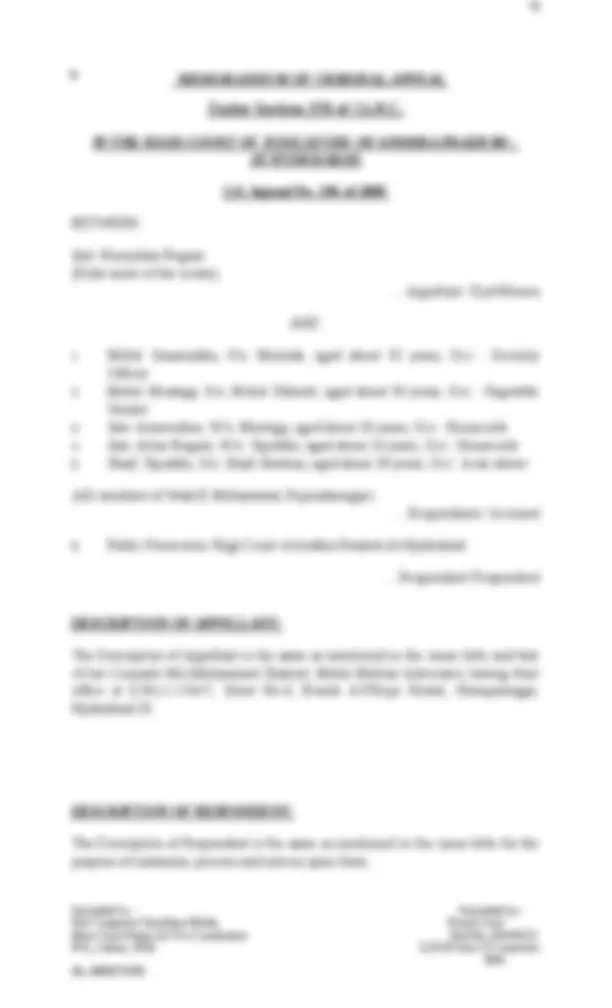
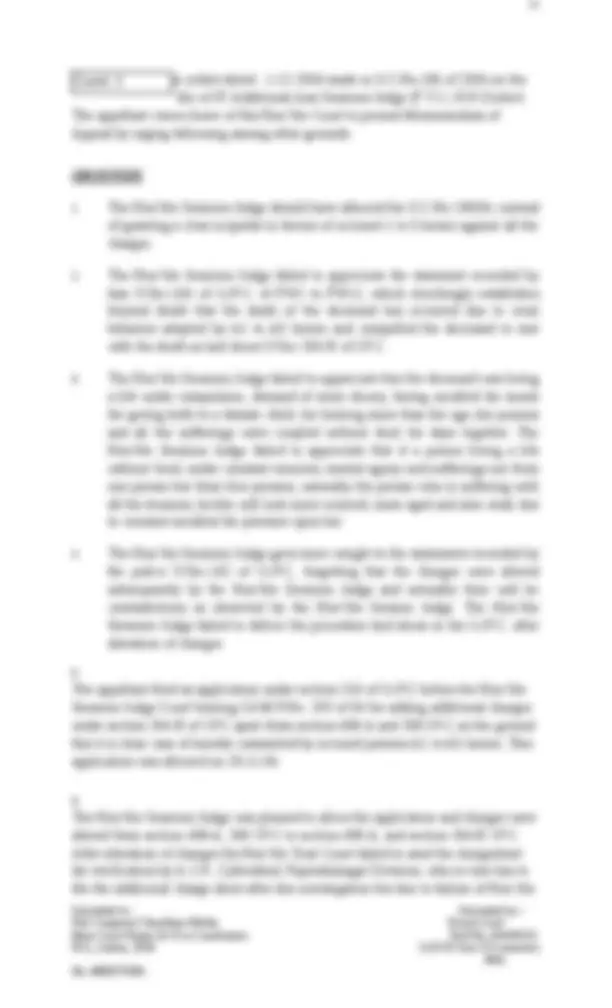
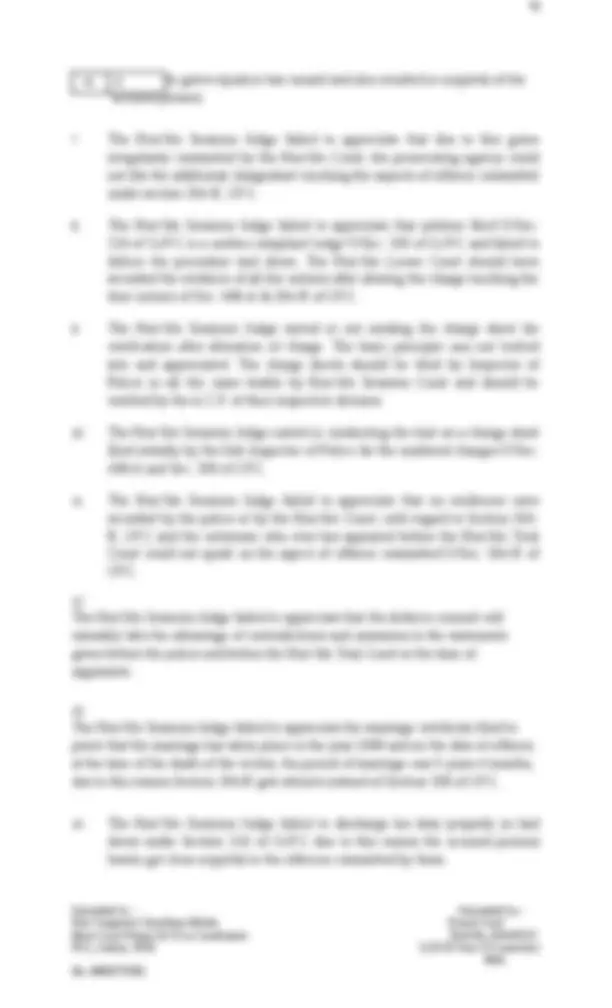


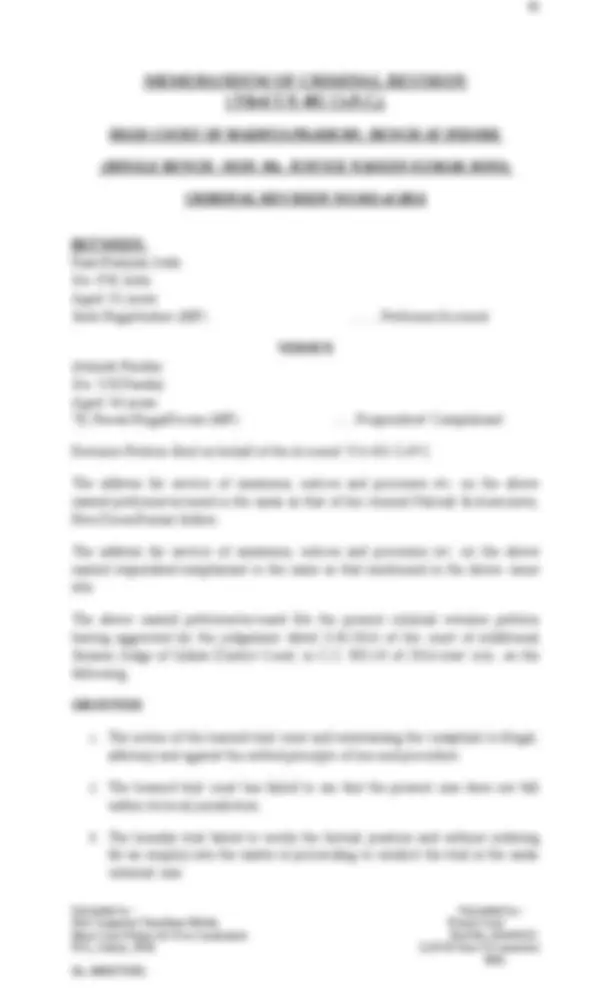
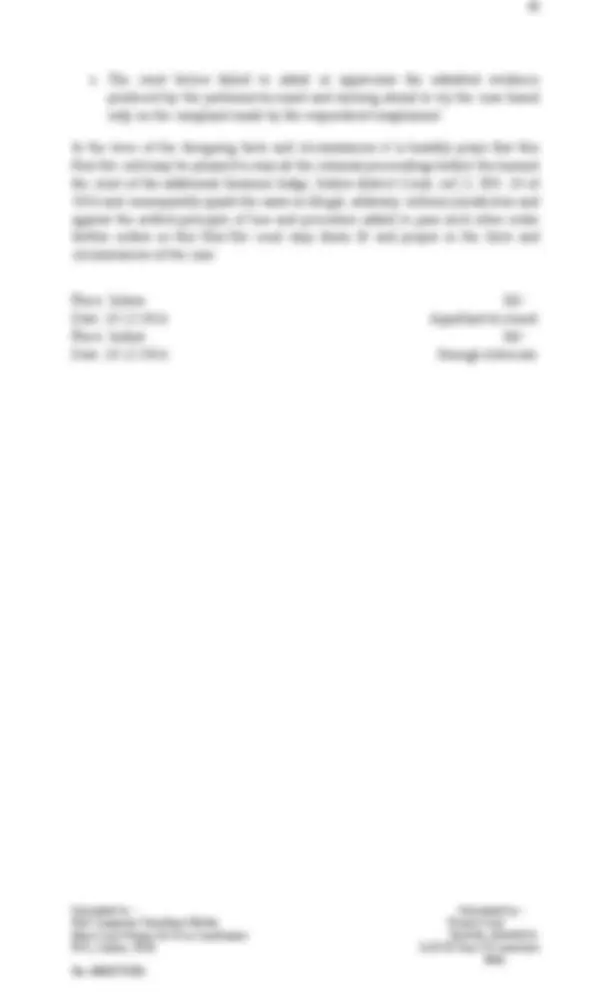


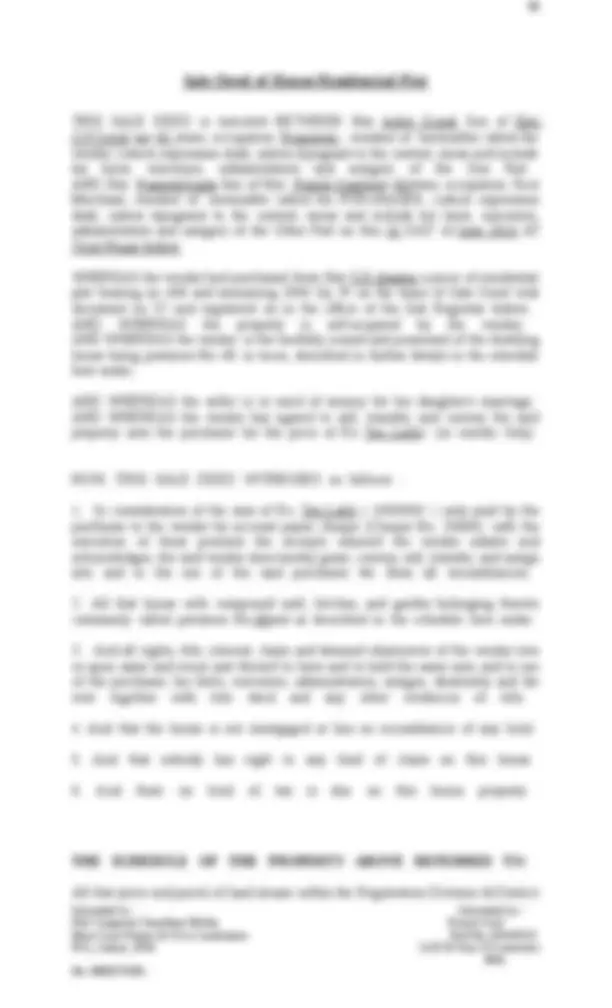
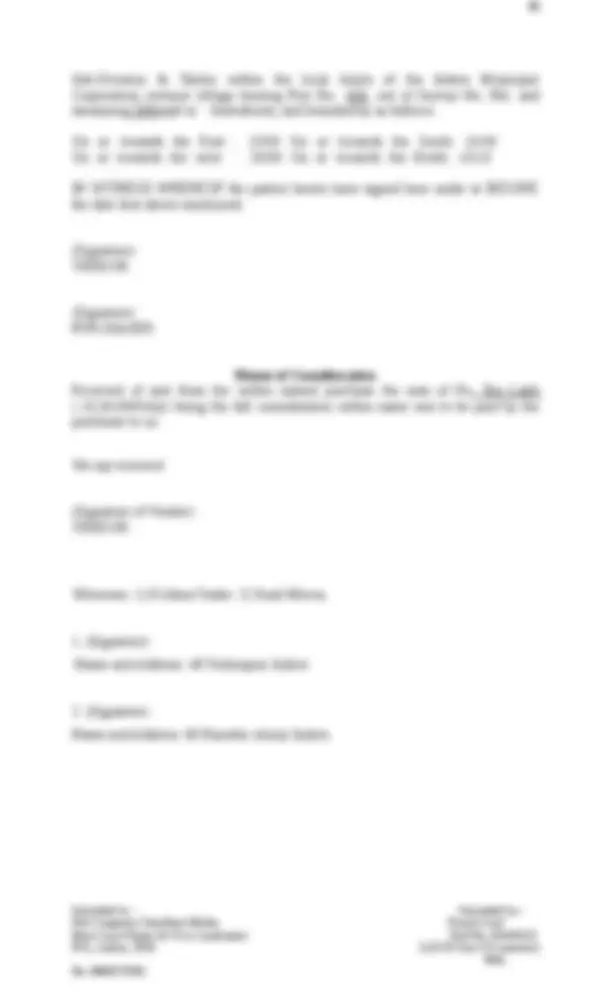
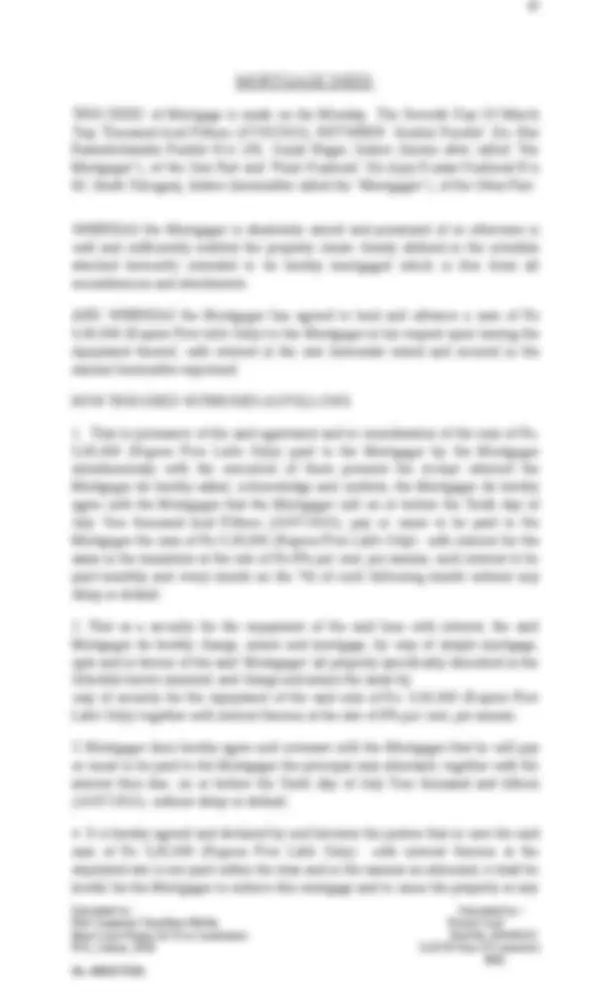

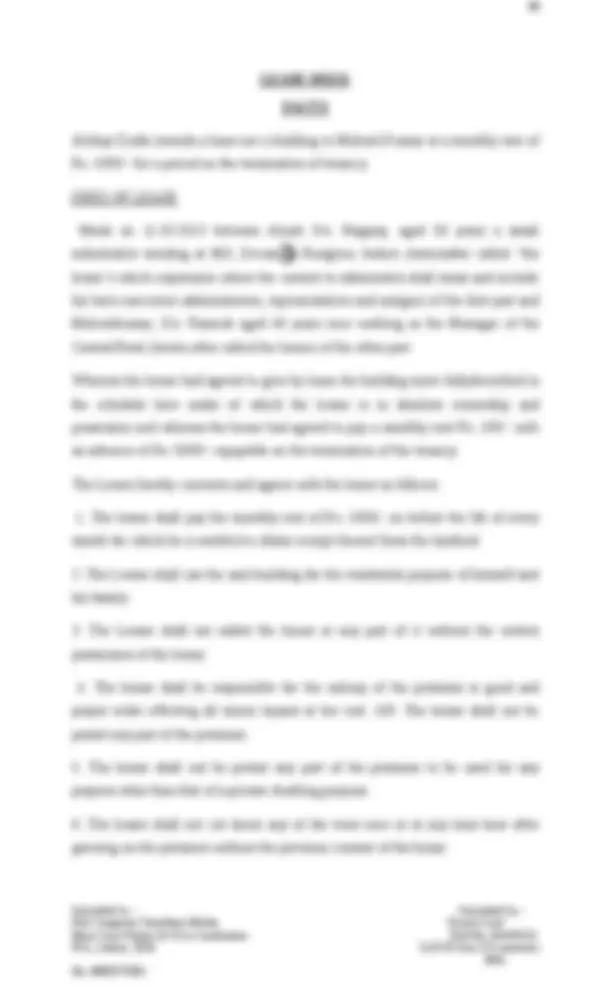
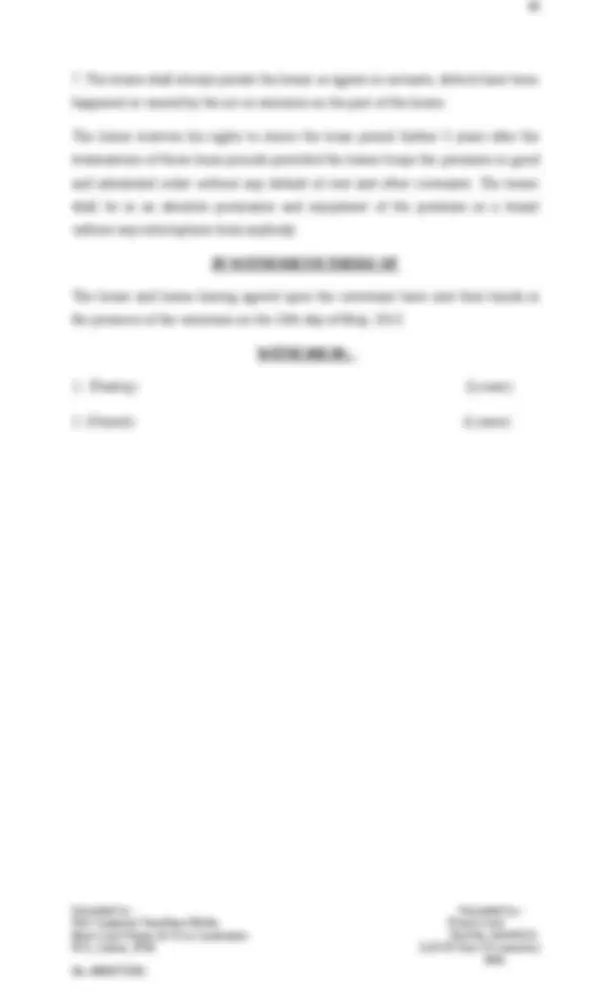
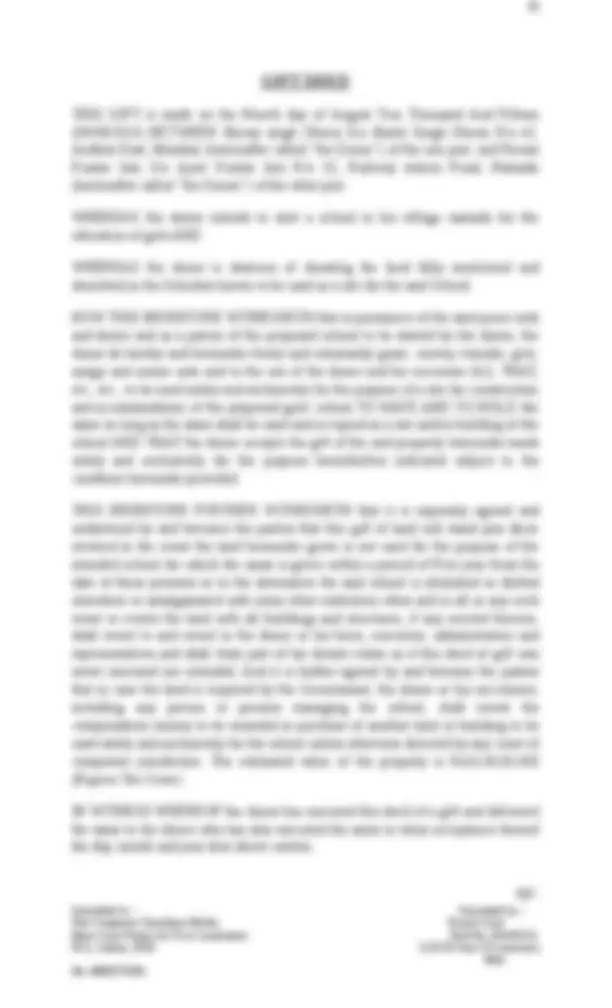


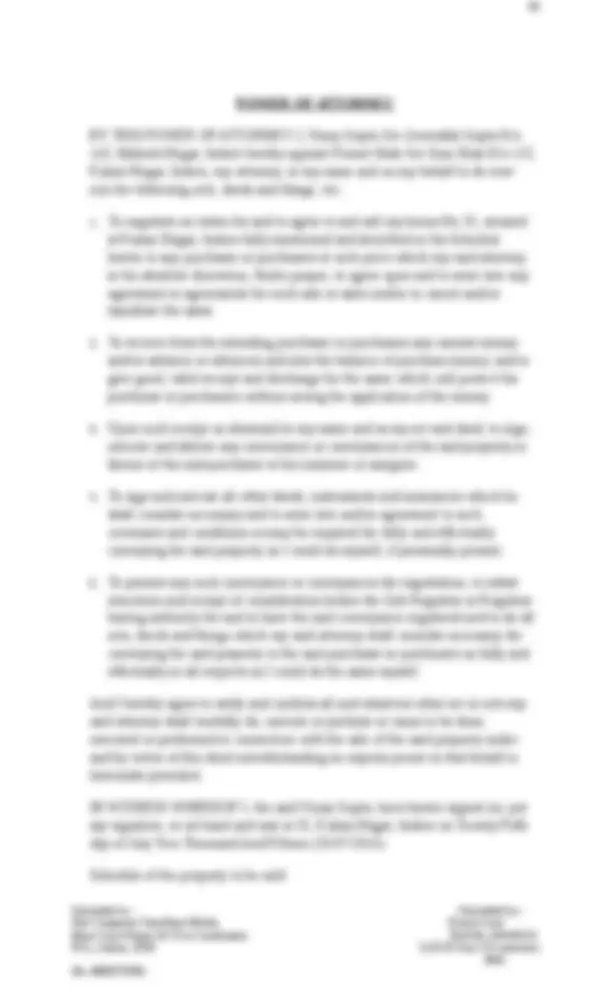

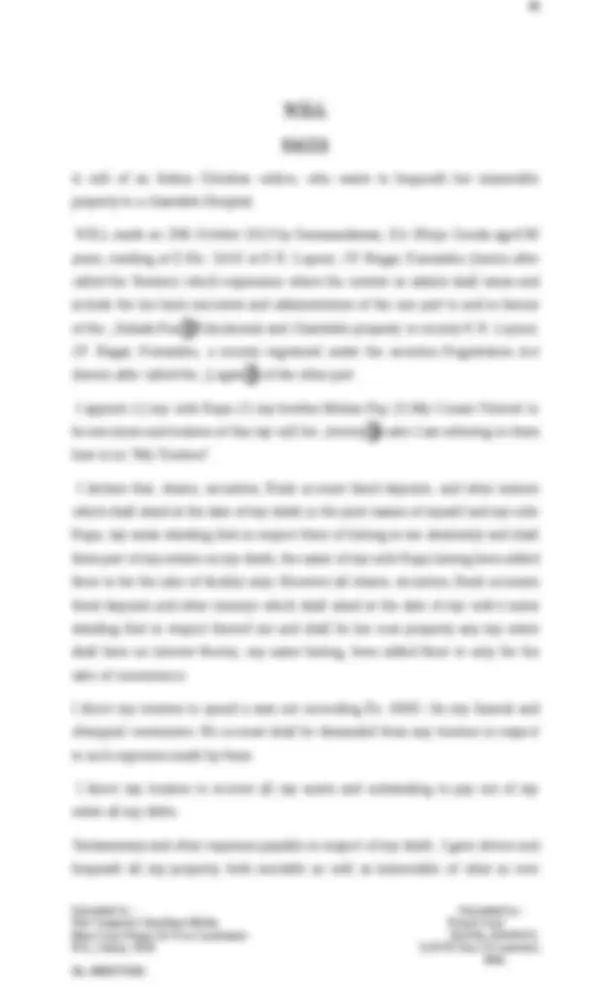
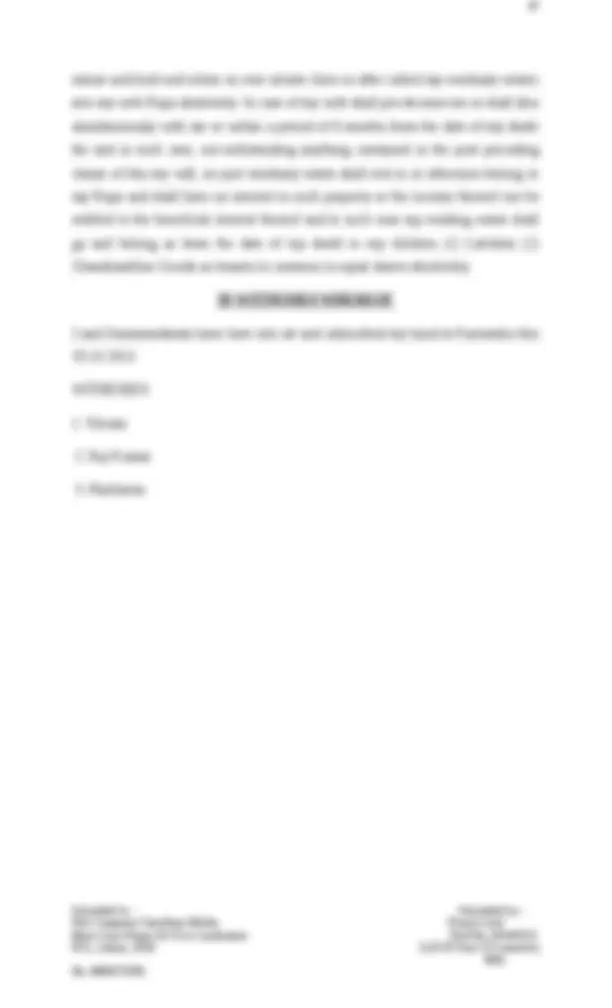
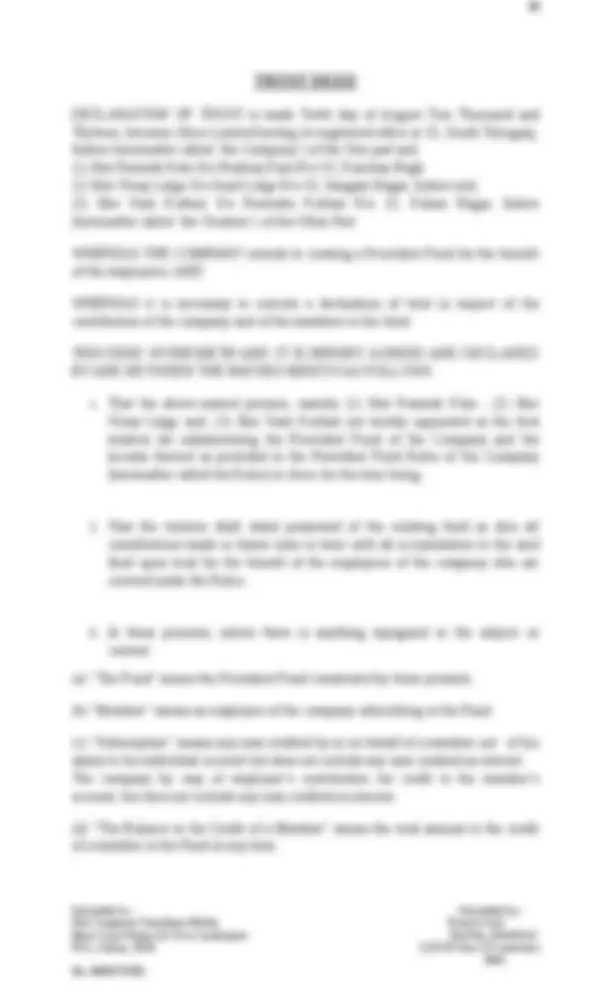
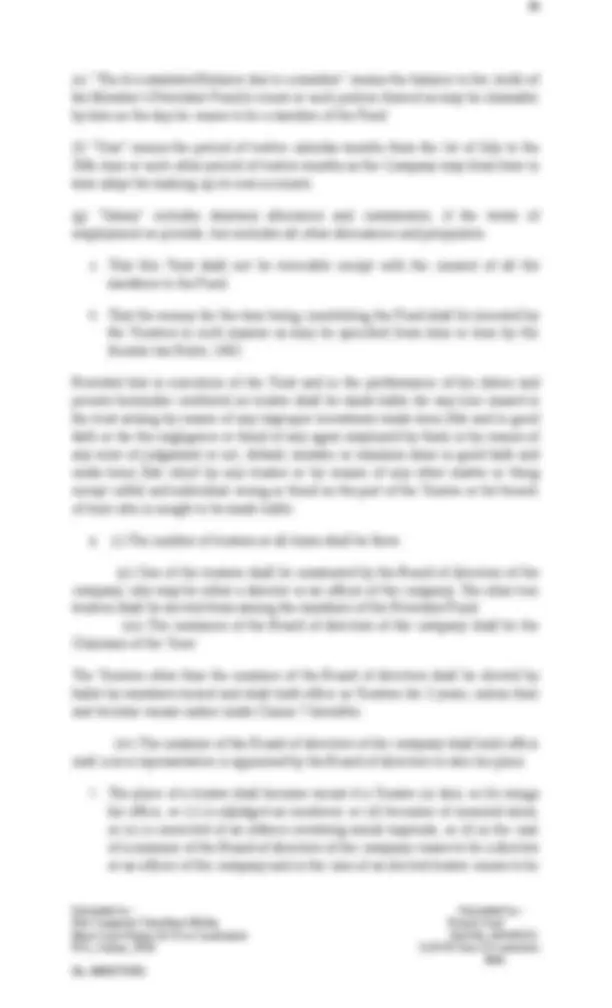
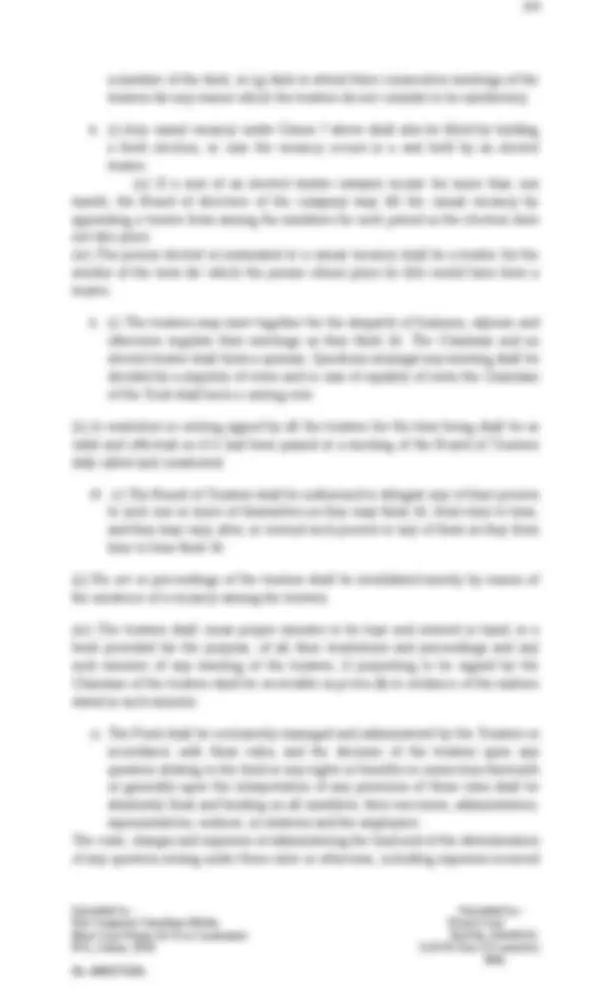


Study with the several resources on Docsity

Earn points by helping other students or get them with a premium plan


Prepare for your exams
Study with the several resources on Docsity

Earn points to download
Earn points by helping other students or get them with a premium plan
Community
Ask the community for help and clear up your study doubts
Discover the best universities in your country according to Docsity users
Free resources
Download our free guides on studying techniques, anxiety management strategies, and thesis advice from Docsity tutors
Admin Notes By Prof. Sayali Bandi
Typology: Thesis
1 / 103

This page cannot be seen from the preview
Don't miss anything!





























































































Submitted to:- Submitted by:- Prof. Sangeeta Choudhary Mehta Dinesh Goel Moot Court Project & Viva Coordinator Roll No.- RCL, Indore, 2018 LLB III Year (VI semester) Mob.
Submitted to:- Submitted by:- Prof. Sangeeta Choudhary Mehta Dinesh Goel Moot Court Project & Viva Coordinator Roll No.- RCL, Indore, 2018 LLB III Year (VI semester) Mob.
iii)Bail Application
iv)Anticipatory Bail Application
v) Memorandum of Appeal (Criminal) vi)Criminal Revision
i) Sale Deed
ii) Mortgage Deed
iii) Lease Deed
iv) Gift Deed
v) Promissory Note
vi) Power of Attorney
vii) Will
vii) Trust Deed
9 Viva Voce 10 Total Marks 100
Submitted to:- Submitted by:- Prof. Sangeeta Choudhary Mehta Dinesh Goel Moot Court Project & Viva Coordinator Roll No.- RCL, Indore, 2018 LLB III Year (VI semester) Mob.
Drafting, in legal sense, means an act of preparing the legal documents like agreements, contracts, deeds etc.
A proper understanding of drafting cannot be realised unless the nexus between the law, the facts, and the language is fully understood and accepted. Drafting of legal documents requires, as a pre-requisite, the skills of a draftsman, the knowledge of facts and law so as to put facts in a systematised sequence to give a correct presentation of legal status, privileges, rights and duties of the parties, and obligations arising out of mutual understanding or prevalent customs or usages or social norms or business conventions, as the case may be, terms and conditions, breaches and remedies etc. in a self-contained and self-explanatory form without any patent or latent ambiguity or doubtful connotation. To collect, consolidate and co-ordinate the above facts in the form of a document, it requires serious thinking followed by prompt action to reduce the available information into writing with a legal meaning, open for judicial interpretation to derive the same sense and intentions of the parties with which and for which it has been prepared, adopted and signed.
The main purpose of a definition is to achieve clarity without needless repetition. For this reason, "it is unnecessary" to define ordinary words that are used in their usual dictionary meaning.
Drafting may be defined as the synthesis of law and fact in a language form. In other words, legal drafting is the crystallization and expression in definitive form of a legal right, privilege, function, duty, or status.
It is the development and preparation of legal instruments such as constitutions, statutes, regulations, ordinances, contracts, wills, conveyances, indentures, trusts and leases, etc.
The process of drafting operates in two planes: the conceptual and the verbal. Besides seeking the right words, the draftsman seeks the right concepts. Drafting, therefore, is first thinking and second composing.
Legal drafting is a very structured method of writing that can prove intimidating to the uninitiated. The first step in drafting any legal or law-related document is to fully understand its context, which includes studying the language used by the courts, attorneys, and/or legal scholars regarding the issue.
Drafting of legal documents is a skilled job. A draftsman, in the first instance, must ascertain the names, description and addresses of the parties to the instrument. He must obtain particulars about all necessary matters which are required to form part of the instrument. He must also note down with provision any particular directions
Submitted to:- Submitted by:- Prof. Sangeeta Choudhary Mehta Dinesh Goel Moot Court Project & Viva Coordinator Roll No.- RCL, Indore, 2018 LLB III Year (VI semester) Mob.
Drafting of legal matters require special mention. Such matters must, as far as
possible, be arranged in chronological eventual order containing consecutive
paragraph numbers, besides the description of the parties to the case is also the
properties, if any, involved, and in case of court matters mention must be made to
the causes of action or the issues giving rise to disputes or differences, the legal
provisions relating to and go governing the subject matter in issue, the date and
place of making the draft, and such other formalized issues.
One of the many reasons of delays in justice delivery system is bad drafting. Therefore, it is essential for taking all precautions while drafting the legal matters the following are some of the advantages of good drafting of legal matters:
The matters relating to civil disputes requiring approaching adjudicatory body’s
invoices drafting and filling of suits, petitions, appeals, revisions, reviews writ
petitions and so on before the concerned adjudicatory body is like civil courts,
tribunals and higher judicial and other authorities having the power of a court. So
is the case with regard to criminal matters which infected require making of formal
complaints either to police or to competent criminal courts. In case of deprivation
of legal or fundamental rights writ petitions are drafted and filed before either a
High Court or Supreme Court, as the case may be. Drafting of these matters require
higher skills, greater experiences and special knowledge of both law and practice.
Submitted to:- Submitted by:- Prof. Sangeeta Choudhary Mehta Dinesh Goel Moot Court Project & Viva Coordinator Roll No.- RCL, Indore, 2018 LLB III Year (VI semester) Mob.
The persons involved in this job are expected to have our own knowledge of the
law relating to the subject in dispute, the procedure and format in which the
drafting his to be made and appropriate forums before which the same have to be
filed. He should have the knowledge of assessing the pros and cons of using a
particular word or sentence and the adaptability there off in the long and procedure.
He is also expected to have the latest knowledge of law is also the case law
pertaining to the matter in issue.
Submitted to:- Submitted by:- Prof. Sangeeta Choudhary Mehta Dinesh Goel Moot Court Project & Viva Coordinator Roll No.- RCL, Indore, 2018 LLB III Year (VI semester) Mob.
After the general scheme of the draft has been conceived, the draftsman should note down briefly the matters or points which he intends to incorporate in his intended draft. In other words, he should frame what is called a “skeleton draft” which should be filled in or elaborated as he proceeds with his work. Once the draft of the document is ready, the draftsman should appraise it with reference to the available facts, the law applicable in the case, logical presentation of the facts, use of simple language intelligible to layman, avoidance of repetition and conceivable mis-interpretation, elimination of ambiguity of facts, and adherence to the use of Fowlers’ Rules of drafting so as to satisfy himself about its contents.
Certain documents require extra care before taking up the drafting. For example, it must be ensured that contractual obligations are not contrary to the law in the document, where the facts so warrant to ensure. Further, in all the documents where transfer of immovable property is involved through any of the prescribed legal modes, it is necessary to ensure the perfect title of the transferor to such property proposed to be transferred by causing investigation and searches in relation to such title done through competent lawyers or solicitors in the concerned offices of Registrar of Assurance, local authorities, Registrar of Companies. In addition, the requisite permissions required under different enactments viz., Income-tax Act, Land Ceiling Laws, Companies Act, 1956, Lessor’s consent in the case of leasehold land, or any compliance desired under other Central or State Laws or personal laws etc. should be planned to be obtained in advance and recited in the documents wherever thought necessary.
If the draft document has been prepared for the first time to be used again and again with suitable modification depending upon the requirements of each case it should be got vetted by the experts to ensure its suitability and legal fitness if the corporate executive feels it so necessary.
To sum up, the draftsman should bear in mind the following principles of drafting:
i. As far as possible the documents should be self-explanatory.
ii. The draftsman should begin by satisfying himself that he appreciates what he means to say in the document.
iii. The well drafted document should be clear to any person who has competent knowledge of the subject matter.
iv. The draft must be readily intelligible to layman.
v. The document may not be perfect because it says too much or too little or is ambiguous or contains one or more of the facts because it has to be applied in circumstances which the draftsman never
Submitted to:- Submitted by:- Prof. Sangeeta Choudhary Mehta Dinesh Goel Moot Court Project & Viva Coordinator Roll No.- RCL, Indore, 2018 LLB III Year (VI semester) Mob.
contemplated. This should be avoided in the drafting of the documents.
vi. Nothing is to be omitted or admitted at random on the document that is to say negative statements should generally be avoided.
vii. Use of juridical language should be made.
viii. The text of the documents should be divided into paragraphs containing the relevant facts. Each paragraph should be self- explanatory and should be properly marked by use of Nos. of letters for clause, sub clause and paragraphs.
ix. Schedule should be provided in the documents. Schedule is a useful part of the document and should contain the relevant information which forms part of the document. Whether any portion of the document should be put into the schedule(s) will depend upon the circumstances. The schedule is important in the document as it explains useful matters which forms part of the document and should not be ignored and should not be inserted in the body of the document. The main function of the schedule is to provide supplementary test to the document with clarity and convenience.
x. The active voice is preferable to the passive voice, unless the passive voice in a particular connection makes the meaning more clear.
Some Do’s
Submitted to:- Submitted by:- Prof. Sangeeta Choudhary Mehta Dinesh Goel Moot Court Project & Viva Coordinator Roll No.- RCL, Indore, 2018 LLB III Year (VI semester) Mob.
Drafting of documents is very important part of legal documentation. Documents are subject to interpretation when no clear meaning could be inferred by a simple reading of the documents. The legal implications of drafting, therefore, may be observed as under:
x.1. Double and doubtful meaning of the intentions given shape in the document.
x.2. Inherent ambiguity and difficulties in interpretation of the documents.
x.3. Difficulties in implementation of the objectives desired in the documents.
x.4. Increased litigation and loss of time, money and human resources.
x.5. Misinterpretation of facts leading to wrongful judgement.
x.6. Causing harm to innocent persons.
Submitted to:- Submitted by:- Prof. Sangeeta Choudhary Mehta Dinesh Goel Moot Court Project & Viva Coordinator Roll No.- RCL, Indore, 2018 LLB III Year (VI semester) Mob.
PLEADING & CONVEYANCING PLEADINGS
Pleadings are the backbone of litigation, the key to whole judicial system. Pleadings are the statements of the parties in writing, setting out their contentions and claims or counterclaims, giving details so that the opposite party me know what case he/she/it has to need or what is the reply to the other sites case.
“Pleadings” is a concept is inherent in all begins. It is a natural phenomenon, in its simple sense it means to plead one’s own grievances preferably in writing before an authority which can redress such grievances. It also includes the defences or rebuttals submitted against such grievances by the opposite party. In the area of advanced edition of Justice the authorities which can redress the individual grievances of the parties are courts as defined inter-alia, under the Code of Civil Procedure,1908(C.P.C.) or the Code of Criminal Procedure, 1973(Cr.P.C.), or a special codes, if any, appointed under a special laws, or tribunals which are constitute to be codes and having the power of courts and other quasi- judicial bodies which dispose of dispute or difference finally, after hearing both the sides and considering the evidence produced by the both the parties. Thus pleadings as a general concept refer to not only written grievances of aggrieved persons but also the written submissions of opposite parties which can be civil or criminal in nature, having their own jurisdictional limits. In legal parlance, however, the term of ‘pleadings’ is used to denote only in respect of civil side proceedings.
Order 6, R. 1 of Civil Procedure Code (C.P.C.) defines ‘pleading’. It means either a plaint or a written statement.’ the object of a pleading which aims at ascertaining precisely the points for contention of the parties to a suit. The rules of pleading and other ancillary rules contained in the Code of Civil Procedure have one main object in view. It is to find out and narrow down the controversy between the parties.
The function of pleadings is to give fair notice of the case which has to be met so that the opposing party may direct his evidence to the issue disclosed by them. Procedural law is intended to facilitate and not to obstruct the course of substantive justice. Provisions relating to pleadings in civil cases are meant to give each side intimation of the case of the other so that it may be met, to enable courts to determine what is really at issue between parties, and to prevent deviations from the course which litigation on particular causes of action must take.
A pleading is accurate only when stripped of verbosity it pinpoints succinctly the plaintiff’s grievances giving him the right to sue for the desired relief, or when it briefly sets out the defendant’s defence. When so done, there would be hardly any scope left to beat about the bush or to take the other party by surprise.
Submitted to:- Submitted by:- Prof. Sangeeta Choudhary Mehta Dinesh Goel Moot Court Project & Viva Coordinator Roll No.- RCL, Indore, 2018 LLB III Year (VI semester) Mob.
should be alleged in the pleading. It is for the judge to draw such inferences from those facts alleged in the pleadings as are permissible under the law. A judge is bound to apply the law of the land and draw correct legal inferences from the facts. Therefore, pleading should only be confined to Facts.
Exceptions to the above rule:
There are four exceptions to this general rule that every pleading must state facts and not law or influence of law -
a) Foreign laws - statutes of a foreign country intended to be relied upon, should be set forth as any other facts. The court does not take any judicial notice of foreign laws ; hence, they must be pleaded as facts.
b) Though it is a rule of pleading that the conclusions of the questions of mixed law and Facts need not be stated in a pleading, yet for the sake of clarity and convenience, they may be stated. For instance, the defendant might state that the suit is barred by the statute of limitation, or he may say that he is entitled to set of, after narrating the facts on which he bases his conclusions.
c) Presumption - order 6, rule 13 of civil procedure code Lays down that neither party under any pleading may allege any matter of fact which the law presumes in his favour or where the burden of proof lies up on the other side, unless the same has been specifically denied. For example, in the case of bill of exchange, where the plaintiff sues only on the bill, and not for the consideration as a substantive ground of the claim, the consideration need not be proved. This is so because section 118 of the Negotiable Instrument Act presumes the existence of consideration. But, if the plaintiff sues on the consideration as a substantive ground of his claim, he must alleged the consideration specifically. d) Customs or usage of trade should be pleaded like any other fact, If a party wants to rely on them. However, a custom repeatedly brought before the court and recognised regularly by them, and which has therefore acquired the force of law, need not be pleaded, as the court is Deemed to have taken judicial notice of such a custom.
Rule II : Material Facts
The second principle of pleadings is that they should contain a statement of material facts and material facts only. Though the expression " material facts" has not been defined in the code, it means all facts upon which the plaintiffs cause of action or the defendants defence depends, or, in other words, all those facts which must be proved in order to establish the plaintiffs right to relief claimed in the plant or the defendant's difference in the written statement. This rule has been incorporated on order 6 rule 2 of the Civil Procedure Code. The above rule requires- i) That the party pleading must plead all material facts on which he intends to rely and
Submitted to:- Submitted by:- Prof. Sangeeta Choudhary Mehta Dinesh Goel Moot Court Project & Viva Coordinator Roll No.- RCL, Indore, 2018 LLB III Year (VI semester) Mob.
ii) That he must plead materials fact only, and no facts, which are immaterial, should be pleaded.
Exceptions to the above rule -
i) Condition precedent :- The performance of any condition precedent for the ground of claim of any party need not be alleged, as its averment is employed in the pleading. The other party intending to contest the performance or occurrence of such a condition is bound to setup the plea in his pleading. Thus, the notice to be given under various acts before the Institution of Suits need not be alleged in the pleading. But if the law itself prescribes to the contrary, it becomes necessary to plead the same. Thus, a notice under Section 80 of the Civil Procedure Code, before commencing a Suit against the government or any government officer is a condition precedent which must be pleaded, because Section 80 of the Civil Procedure Code Lays down that the plaint must contain a statement that such notice has been delivered.
ii )Presumptions :- it is not necessary for the party to allege in his pleading any material fact, which the law presumes in his favour, or the burden of proof, which lies on the other side, unless the same has first been specifically denied. ( order 6, rule 13 CPC)
iii) Matters of inducement :- on the analogy of the English practice, the facts which are in the nature of ' matters of inducement' are those matters which are in the nature of introductory allegations, and which state who the parties are, what business they carry on, how they are connected, and other surrounding circumstances leading up on the dispute. Though these are not material fact, they are allowed, because they explain the subsequent events. though matter of inducement are tolerated, it should be the endeavour of a good pleader to reduce such statements to the minimum.
Rule III : Only Facts, Not Evidence
The third principle of pleadings is that the evidence of facts, as distinguished from the facts themselves need not be pleaded. In other words, the pleadings should contain a statement of material facts on which the party relies but not the evidence by which those facts are to be proved.
The facts are of two types-
i) Factaprobanda- the facts required to be proved and ii)Factaprobantia - the facts by means of which they are to be proved (particulars & evidence )
The pleadings should contain only factaprobanda and not factaprobantia. The material fact on which the plaintiff relied for his claim or the defendant reliese for
Submitted to:- Submitted by:- Prof. Sangeeta Choudhary Mehta Dinesh Goel Moot Court Project & Viva Coordinator Roll No.- RCL, Indore, 2018 LLB III Year (VI semester) Mob.
By amending one's own bleeding with the leave of the court by amending ones on cleaning with the leave of the court Amend means "to change". The court May at any stage of the proceeding allow either party to alter or amend his pleading in such manner and on such terms as maybe just, and all such amendments shall be made as may be necessary for the purpose of determining the real questions in controversy between the parties. A pleading may be revised in the following three ways :
By amending it at the instance of the court itself.
By amending it at the instance of the opposite party and ;
By amending one's own pleading with the leave of the court.
Kinds of Amendments
The amendments of pleadings falls into two categories- i) compulsory amendment ii) voluntary amendment
Submitted to:- Submitted by:- Prof. Sangeeta Choudhary Mehta Dinesh Goel Moot Court Project & Viva Coordinator Roll No.- RCL, Indore, 2018 LLB III Year (VI semester) Mob.
CONVEYANCING
Conveyancing is the art of drafting of deeds and documents whereby land or interest in land i.e. immovable property, is transferred by one person to another; but the drafting of commercial and other documents is also commonly understood to be included in the expression. Mitra’s legal and commercial dictionary defines “conveyance” as the action of conveyancing, a means or way of conveyancing, an instrument by which title to property is transferred, a means of transport, vehicle. In England, the word “conveyance” has been defined differently in different statutes. Section 205 of the Law of Property Act, 1925 provides that the “conveyance includes mortgage, charge, lease, assent, vesting declaration, vesting instrument, disclaimer, release and every other assurance of property or of any interest therein by any instrument except a will”.
“Conveyance”, as defined in clause 10 of Section 2 of the Indian Stamp Act, 1899, “includes a conveyance on sale and every instrument by which property, whether movable or immovable, is transferred inter vivos and which is not otherwise specifically provided by Schedule I” of the Act.” Section 5 of the Transfer of Property Act, 1882 (Indian) makes use of the word “conveyance” in the wider sense as referred to above.
Thus, conveyance is an act of conveyancing or transferring any property whether movable or immovable from one person to another permitted by customs, conventions and law within the legal structure of the country. As such, deed of transfer is a conveyance deed which could be for movable or immovable property and according to the Transfer of Property Act, 1882, transfer may be by sale, by lease, by giving gift, by exchange, by will or bequeathment. But acquisition of property by inheritance does not amount to transfer under the strict sense of legal meaning.
Conveyancing is a legal drafting of deeds and documents because products of this drafting leave an indelible legal effect on the parties. The object with which a conveyance is made is to state the intentions of the parties in the clearest possible language in order to keep the evidence of those intentions in writing. The object of preparing document, deed or instrument of conveyancing is to prepare a clear and distinct proof of the transfer of property or right in its nature so as to be used in the related matter.
Submitted to:- Submitted by:- Prof. Sangeeta Choudhary Mehta Dinesh Goel Moot Court Project & Viva Coordinator Roll No.- RCL, Indore, 2018 LLB III Year (VI semester) Mob.